Member Blog: Unleashing the Green Revolution – Empowering Cash Management in the Cannabis Industry with Automated Bliss

For most cannabis business owners, the abundance of cash poses a never-ending cash management challenge. Owners, staff and financial teams must navigate the complexities of managing and securing large cash volumes with limited access to banking relationships due to the federally illegal status of cannabis. Most dispensaries resort to manual cash handling and counting, however, every time cash is counted manually – typically around six times a day – dispensaries face the risk of miscounts, theft and security threats as well as challenges in tracking volumes, reporting changes and supporting audits.
Handling cash manually is inefficient and unsustainable for new and established dispensaries. Forward-thinking cannabis retailers are turning to automation solutions that transform the collection, counting and reconciliation of cash volumes in a retail setting. Cash automation offers a solid, systemic alternative to the typical cash handling processes.
One medical dispensary in D.C. incorporated cash automation to help with the time-consuming manual counts and to improve productivity. This dispensary, the largest and oldest in Washington, D.C., accounts for 54% of the cannabis sales in the city and accepts multiple payment methods. Cash comprises 40% of sales and is a major pain point for the dispensary’s managers and associates.
Since implementing cash automation solutions last year, the dispensary has improved count accuracy, reduced discrepancies and saved time for its staff, who now can service the 400 – 900 patients who visit each day instead of counting cash for hours on end. Additionally, automation has been a game changer for the dispensary’s accounting team. The finance team can view the exact volume of cash on hand remotely and in-store, informing important business decisions for cash planning, including leveraging available cash on hand for product and services payments and optimizing change order and deposit schedules to reduce armored security and bank costs. Real-time reporting and visibility empower the finance teams to manage cash operations with confidence.
Other benefits include:
- User-friendly dashboard with cash flow visibility integrated with accounting software.
- Notifications on urgent needs, including hardware performance issues, deposit capacity and placing change orders.
- Easy, mobile access to cash balances and transaction history across multiple locations.
- Customizable reporting capabilities for auditing, vendor-specific transactions and overall analysis of every transaction by user/payee, amount and date.
- Security measures to ensure efficient cash counting, balancing to POS and securing cash with high-speed recyclers.
With automation capabilities, cannabis businesses can focus on operational efficiencies, bolster inventory management and systemically ensuring process compliance instead of the time-consuming counts that typically overwhelm employees. As the cannabis industry continues to evolve and expand in 2023 and beyond, embracing cash automation allows dispensaries to thrive while reducing costs and labor and maintaining control over their cash ecosystem.
Committee Blog: The New York Cannabis Market Landscape – A Real Time Analysis with a Social Equity Call to Action

Published by NCIA’s Diversity, Equity & Inclusion Committee (DEIC)
The burgeoning New York State Cannabis Market has been able to launch in record time compared to more mature markets like California and Illinois. The time between state legalization and the actual opening of licensed cannabis medicinal retail and more recently adult-use dispensaries is within one year! This is a great feat to be proud of by any metric though we are in the beginning stages.
With an indelible New York State of Mind, cannabis industry advocates, ancillary technical/professional services stakeholders and regulators created well-informed introductory regulations to get the ball rolling. The New York Social Equity Roundtable examined the best and worst practices of other programs and weighed in on current regulations in our recommendations to the NY Office of Cannabis Management (OCM).
The New York Social Equity Roundtable is a diverse gathering of industry stakeholders along the cannabis industry supply chain with a mission to be a catalyst in the building of an equitable and inclusive cannabis that reflects the ethnic, cultural, social, and economic diversity of New York State. The Roundtable is committed to gathering and sharing valuable industry insights and invites collaboration with other advocacy organizations and individuals to develop solutions.
This article is a followup to The Pathway to Greater Equity in New York’s New Adult Use Cannabis Market and serves as a compendium of the work this Roundtable has executed on over the past year since that article was published.
I would like to point out that while the news cycle has brought to light certain aspects of the New York market, the public should also be made aware of the ongoing, painstaking battle it has taken to fight for equity in New York.
Below are snapshots of the NY market landscape and some of the major challenges facing current and aspiring cannapreneurs that will hopefully inspire further conversations on the matter. Our hope is that this article helps not only provide understanding of what it has been like in the Empire State, but also provides new states with an understanding of the massive undertaking that cannabis legalization requires in order to be executed upon equitably.
In this article:
- Comments on the impact of unregulated smoke shops
- Comments on bad faith lawsuits
- Legacy Operator definition
- A note on Supply Chain Opportunities
- July 31st Public Comments on Adult Use Rules
- January & February Public Comments
- Letter recommending an Advisory Board focused on Economic Inclusion & Expansion
- Letter to the Governor urging Pardons for ALL Nonviolent Cannabis Offenders
Unregulated Smoke Shops / Grey Market thwarting the growth of licensed retailers
Frederika Easley, The People’s Ecosystem, MCBA Board Member: New York’s goal must be to create a regulated market that is so enticing and easy to navigate that operating in both the gray and legacy markets feels like unnecessary risk. The smoke shop owners who have decided to be greedy and harmful in many cases offering tainted products and appealing to the youth must receive consequences that educate, penalize and offer opportunity for redemption.
Stephanie Keeffe, Etain: Allowing smoke shops to operate without the appropriate licensure sets a dangerous precedent and undermines the efforts to establish a safe and legitimate cannabis industry in New York. It is in the best interest of everyone, including consumers, businesses, and the government to ensure that all businesses follow the appropriate licensure procedures and comply with regulations. Safety should always be paramount.
Tavian Crosland, Social Equity Empowerment Network: Gray market operators are a reality in any transitioning market and we don’t want to have a second wave of cannabis criminalization. We also want to give the people most impacted by prohibition a chance to profit from the plant. With priority CAURD licenses issued we have taken a step towards restitution and equity and without the step of enforcement we may be setting them up for failure. This is the most hostile environment a new business, in a new market could traverse. Enforcement doesn’t have to mean criminalization and we’ll miss our mark if we don’t reign in non compliant operators. We won’t get a second chance to get it right.
Scheril Murray Powell Esq, JUSTUS Foundation: The MRTA is very clear that priority should be given to those who have been significantly harmed by the criminalization of cannabis. The typical Grey market participant is not from these disproportionately impacted communities and have the financial means to open these storefronts. The individuals that have not directly experienced the harm referenced in the MRTA should recognize that they are trying to skip ahead of those who qualify for equity and have been harmed. There will be thousands of retail licenses in NY and plenty of opportunity for everyone to participate, but the grey market actors need to wait their turn. This is not judgment, but an appeal to their moral compass.
Hawaii Mike: The grey market shops are causing the biggest obstacle on the pathway to a thriving legal market. The lack of clear laws and regulations make this an almost impossible battle without using extreme measures to force these businesses to cease operations. Until these shops are closed permanently there will be confusion amongst the consumers and unsurmountable competition to legal operators.
Raina Jackson, NCIA DEI Committee Organizer: NY needs an Advisory Board that is more representative of the cannabis supply chain as operators and ancillary providers with direct applicant/operator interaction. Too many assumptions are made about what operators want without a robust survey of what we say we actually need. More than just money is needed. would help illuminate pain points and to keep the conversation focused on how to resolve unintended consequences arising from any venture this new under regulation. The current configuration does not represent stakeholders disproportionately targeted and excluded.
Lawsuits Attempting to Circumvent the Equitable Rollout of Cannabis Retail Licenses
The recent CARCS lawsuit is reminiscent of lawsuits launched in Illinois by general market operators disregarding the need for the prioritization of those disproportionately harmed by racially motivated cannabis prohibition tactics. Guided by greed, their intentions are to use the courts to stall progress and eliminate competition.
Mike Lomuto (former Head of DEI at the NCIA): While New York has an uphill battle as it navigates the unregulated market and integrates Legacy operators into the regulated space, OCM has ensured that the first set of licenses in New York go to individuals deemed disproportionately impacted by the war on drugs. It appears as if this lawsuit is a tactic we have seen in other states, where the small handful of multistate licensees who were part of a highly exclusive rollout of the Medical market are attempting to push themselves into the Adult Use market, under the guise of promoting equity while in actuality furthering the harm of the war on drugs and continuing the exclusion of justice-involved licensees.
Raina Jackson, NCIA DEIC Organizer, Policy & Regulatory subcommittee chair: As a reminder to companies that have unloaded these spurious lawsuits against well intentioned cannabis programs, be on notice that we see you and have documented what you have been doing to undermine equity, progress, and fairness. When you end up on the wrong side of history, no one will buy your revisionist historical accounts. The influential Millennials and GenZ populations that you seek as customers demand a higher level of corporate responsibility and may not be so forgiving. Before it’s too late I hope you find that it’s more rewarding to cooperate and coexist rather than to try to conquer. It is proven that well run companies that prioritize equity, inclusion, and transformation reap the benefits in the bottom line, including employee retention and community goodwill, no matter what industry.
Discussion of the ASTM Legacy Operator Definition
Legacy operators have been maligned and misunderstood in the regulated The definition of Legacy is Definition – as an added layer to help readers understand the situation
ASTM Definition of Legacy Operator
- “A Legacy Operator is an individual who:
- 1) Commercially for the majority of their income, or sacramentally, or ceremonially distributed cannabis
- 2) Outside of the Legal Framework
- 3) During the period of Prohibition
- 4) For a minimum of 5 years before legalization”
Lack of Education on Supply Chain Opportunities and Licensing Timelines
We notice that the infrastructure focus on brick and mortar retail is often to the detriment of other license types that don’t get as much attention but are more financially attainable.
- Lack of education provided on license types within the supply chain outside of retail and cultivation, including ancillary opportunities without a need for licensure. There is a need for real or hypothetical case studies illuminating the financial and business steps and resources necessary to succeed. Expectations need to be tied to realistic timelines and financial inputs.
- Resolutions and Opportunities. Need for heightened levels of Technical assistance and ancillary service/product providers
Public Comments Submitted on July 31st Regarding Adult Use Rules
The Office of Cannabis Management put out a request for public comments in May of this year, on its latest round of Adult Use rules. Over the course of several Roundtable discussions and countless hours of document review, comparison to previous Rules, and several debates over specific language, our Roundtable produced a set of public comments we are very proud of, that we believe if adopted would provide for a more equitable industry.
This is an excerpt of the full document, which can be found here.
Part 121 – Social and Economic Equity
§ 121.1 Qualifications for a Social and Economic Equity Applicant. (a) (b)
RECOMMENDED TEXT
(a) General Qualifications. To qualify as a social and economic equity applicant, an applicant shall demonstrate, through the mandatory production of documents and other information described in this Part:
(1) that sole control of the applicant is held by:
(i) an individual from a community disproportionately impacted by the enforcement of cannabis prohibition;
(ii) a minority-owned business;
(iii) a women-owned business;
(iv) a distressed farmer; or
(v) a service-disabled veteran owned business.
(b) If sole control of the applicant is held by a woman who is also a minority-group member or women who are also all minority group members, the applicant may qualify as a minority- owned business, a women-owned business, or both.
(1) Applicants qualifying for both a minority and women owned business shall have extra priority status in processing applications.
RATIONALE
We have added (b.1) because there needs to be a prioritization of Black, (Afro-Latin), and Indigenous women within women-owned businesses. Otherwise social equity disproportionately benefits White women, as selective affirmative action has often done in the past.
Due to Prop 209 in CA, race could not be used as a qualifying criterion for equity. As a result in San Francisco, equity grant funds were distributed among an even number of Black and White applicants/operators. CA is unique because of the history of white legacy operators upstate yet this was not equitable funds distribution. NY should avoid the same mistake.
Public Comments Submitted in January and February 2023
Earlier in 2023, our Roundtable also submitted public comments on an earlier version of OCM’s Adult Use rules, as well as its rules regarding marketing and packaging. Internally, our Roundtable faced the challenge of transitioning into a new year and a new committee term at the NCIA. The fact that our public comments were the most robust document we had completed to date was a testament to the resilience and collaborative nature of our Roundtable.
These documents can be found here.
And here.
Letter Recommending Advisory Board, Re-submitted to OCM September 2023
In September of last year, our Roundtable submitted a letter to OCM, recommending the creation of an Advisory Board that would be community-based and focus on Economic Inclusion & Expansion. This was modeled after a similar initiative that has produced successful in Michigan, with Eric Foster, M4MM’s National Policy Director, serving as the bridge between our Roundtable and the Michigan Social Equity Task Force.
You can read the full letter here.
Letter to Governor Hochul Urging Pardons for Nonviolent Cannabis Offenders
A very strong unifying factor of our Roundtable is everyone at the table’s commitment to the repair of the harm inflicted by the War on Drugs. With that in mind, we submitted a letter to Governor Hochul late in 2022 urging her to pardon ALL nonviolent cannabis offenders, effectively taking the lead of President Biden, but going an imperative step further to set New York as a leader to undo some of the harm it has itself inflicted. As this action has still not taken place, our Roundtable has resubmitted this letter to the Governor.
The full letter can be read here.
In Conclusion
This is just the beginning. Unfortunately, it is necessary for us to always remain diligent in our work for true equity, not only in cannabis but in society. At least until the overall momentum of society is moving in that same direction. Until then, we encourage you to keep going strong, to tap into collaborative groups doing the same work, to draw on one another’s strengths, as well as wisdoms, experiences, and collective resources.
The fight to create an equitable industry in New York and other states will continue on, and the members of the New York Social Equity Roundtable will be here until our mission is achieved.
Member Blog: 5 Things You Need to Do Before You Launch Your Cannabusiness in New York

Cannabis was legalized in New York in 2021, and now the market is starting to fully open up for all types of cannabusinesses across the state. Despite a rocky start to rolling out new licenses, it’s almost time for the general public to dip their toes in and start their own dispensaries.
New York’s legal cannabis market is projected to be worth $4.2 billion by 2027, making it the country’s second-largest recreational cannabis state. It won’t be long before cannabis businesses have hundreds of locations across New York.
Curious about how to open a New York dispensary? Here are five things you need to do to get ready for your blossoming cannabusiness.
Conduct Market Research & Choose a Location
Since many cannabusinesses will be opening up in New York in the next few years, you need to ensure that yours is set up for success from the start. The best way to secure success is by selecting a high-demand area with minimal competition. You can identify lucrative locations by exploring different neighborhoods and conducting market research.
Visit prospective spots in person, instead of just looking at them on a map. You’ll get a much better sense of the feel of the area, the type of people walking through, the surrounding businesses, and more. And if feasible, talking to residents and local business owners will help you to really understand the market.
It is also important to be mindful of the New York zoning laws before securing a location. According to statewide zoning restrictions, a cannabis dispensary can’t be on the same road or within 500 feet of a school and 200 feet from a house of worship. Cities may have additional restrictions to limit the number of cannabis dispensaries in a certain location. Do your research before you get married to a location that won’t work out for logistical reasons.
Apply for a License
You’ll need a license to open a cannabusiness in the state of New York. However, as of October 2023, the path to applying and receiving a cannabis license in the state is a little up in the air.
When applications for the first licenses opened up, New York legislators wanted to ensure that people who were negatively impacted by the state’s previous criminalization of cannabis could apply first. This included people who were convicted of a cannabis offense in New York or were affected by a loved one’s conviction.
Now, starting on October 4, 2023, New York will start accepting license applications from a much broader pool of entrepreneurs. Applications are open to everyone over the age of 21 who does not already have three licenses. This is exciting news for many aspiring cannabusiness owners who were not eligible the first time around.
However, these licenses may not be issued as soon as prospective owners hope. When the state legalized cannabis, its goal was to award half of the retail licenses to people with previous cannabis convictions, racial minorities, women, and veterans disabled during service. Several veterans have filed a lawsuit stating that veterans were unfairly passed over for the early licenses. The judge in the case ordered that the state wait to award any new dispensary licenses until the case continues.
Keep an eye on the New York Office of Cannabis Management’s website for updates on the next round of licensing applications.
Secure Funding for Your Cannabusiness
Opening a dispensary in New York will be expensive. While profits will likely be high once you open, you need to find a way to secure the funding needed to get your cannabusiness operational — which experts say could cost between $500,000 to $2 million.
This figure accounts for a variety of expenses for your cannabusiness, including:
- Licensing and application fees
- Lawyers and consultants
- Real estate
- Dispensary design and construction
- Staffing
- Business equipment
- Surveillance and security system
- Marketing and advertising
- Products and inventory
Many cannabis entrepreneurs take out loans to cover these up-front costs, either from credit unions or cannabis-friendly banks. Some are able to partner with others or enlist investors to start their businesses. However, you should do your due diligence and research before taking on a loan or going into business with an investor. Unfortunately, there has been some predatory lending occurring in the market because of the inability to lend from large banks. Make sure that you do this research before you get too far in the process of creating your cannabusiness.
Understand Cannabis Laws & Regulations in New York
There are hundreds of laws and regulations that apply to cannabusinesses in New York. While this can feel overwhelming, it’s important to follow them carefully, especially when you’re setting up your dispensary.
There are some regulations that apply to your customers that you’ll need to adhere to, including:
- Customers must be over the age of 21
- Customers can only buy 3 ounces of cannabis flower per day
- Customers can only buy 24 grams of cannabis concentrates per day
Others regulations apply to your business location, including:
- Installing a 24-hour commercial-grade security system
- Installing a perimeter alarm
- Conducting video surveillance in every part of the store with cannabis products
- Products cannot be visible from outside of the store
- Maintaining minimum staffing levels (depends on business plan submitted with application)
- Training staff on local ordinances, laws, and cannabis safety
It’s vital to take these rules seriously from the beginning. Neglecting even a single law could result in your dispensary getting shut down. You can consult an extensive overview of the New York cannabis laws and regulations here.
Invest in the Right Team
You need to hire a team of high-quality employees who will help your business succeed from the very first day. Your budtenders can make or break your entire business model, so you need to vet them carefully and train them well.
Your budtenders will be interacting directly with clients. They’ll answer their questions, suggest products, and upsell items. Hire these employees carefully, and make sure they’re happy in their positions by offering great pay and benefits.
To streamline training, create training manuals and SOPs (standard operating procedures) so that every employee is trained in the same way. This will limit mistakes and increase efficiency and customer satisfaction.
Final Thoughts on Launching Your New York Cannabusiness
Cannabis is expected to become a booming industry in New York. If you’ve always dreamed of opening a cannabusiness, now’s your chance to get in as early as possible and make your impact on the market!
SAFER Banking Act Clears Senate Committee
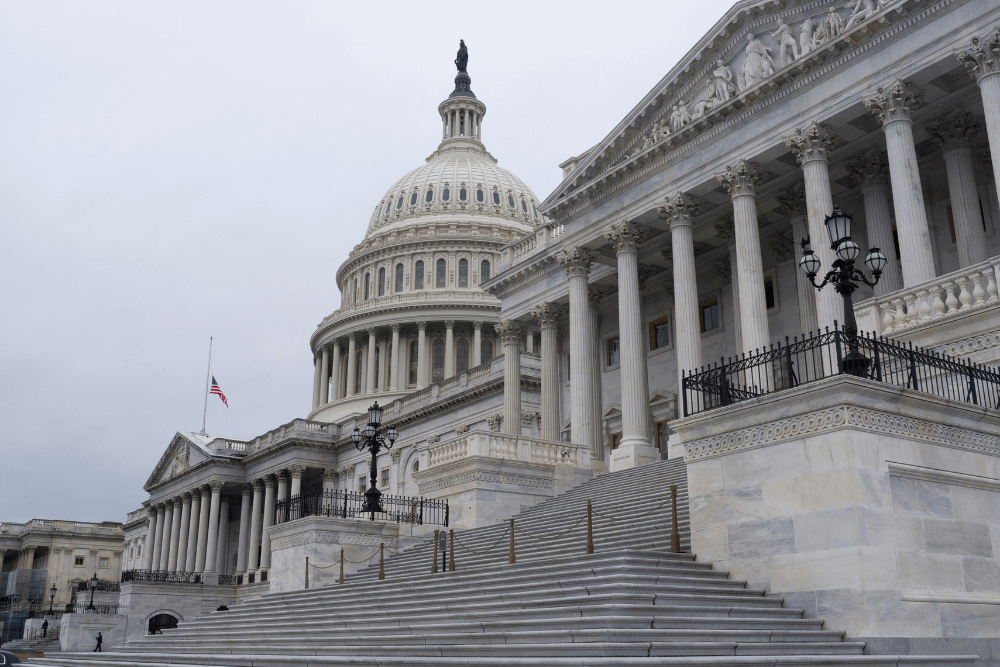
NCIA (and myself personally!) have been talking about the SAFE Banking Act for years.
After the Senate Banking Committee’s hearing on the topic of financial services and the cannabis industry in May, it became clear that in order for the bill to continue on in the legislative process and receive a markup that changes to a few sections needed to be made.
As a result, a slightly new (and improved?) version of the bill was introduced as the SAFER (S. 2860: Secure and Fair Enforcement Regulation) Banking Act last month. Most of the changes in the bill pertained to Section 10, which bars federal banking regulators from taking discriminatory enforcement action against any industry (not just cannabis).
Once SAFER was formally introduced, the Senate Banking Committee announced that a markup was scheduled for September 27. It’s important to note that this was the first time ever that a Senate committee held a markup on a pro-cannabis bill.
During the markup session, multiple amendments were offered. The first, offered by Chairman Brown (D-OH) was what’s known as a “manager’s amendment” and primarily made technical changes to the bill. That amendment also made changes so that the Treasury secretary would be given one year (instead of 180 days) to issue updated guidance to financial institutions that work with cannabis businesses that was first released during the Obama administration in 2014. It also stipulated that federal home loan banks are now included under a list of financial institutions that would be protected from being penalized by federal regulators simply for working with state-legal cannabis businesses.
Another amendment, from Sen. Warnock (D-GA) would have created a 5-year sunset for the legislation unless a report from the Treasury Department certified that it had decreased the racial wealth gap and ameliorated other negative economic impacts of the war on drugs. This amendment ultimately failed.
Additionally, amendments from Senators Hagerty (R-TN), Rounds (R-SD), Crapo (R-ID) were also offered but were ruled out of order, withdrawn, and failed, respectively.
Republican members of the committee voiced concern that the bill allowed for financial institutes to utilize reputational risk to de-bank certain accounts they do not align with ideologically and argued that no financial regulator should be able to pressure any financial entity to refuse to provide service to a lawful entity.
Some Democrat members, particularly Sen. Warnock (D-GA), voiced concern that the bill does not adequately address the disproportionate impacts of marijuana criminalization and its exacerbation of the racial wealth gap in the United States. Other members of the committee encouraged amendments and future legislation intended to improve the quality of life for those most negatively impacted by marijuana criminalization in addition to creating safer conditions for banks and other financial institutions. Sen. Warnock was the lone Democrat who voted “No” on the bill during the markup.
Ultimately, the bill passed out of the committee markup by a bipartisan vote of 14-9. This sets the stage for a full Senate floor vote, which Majority Leader Schumer (D-NY) has committed to scheduling as soon as possible, with the possibility of adding the HOPE and GRAM Acts to the bill before passage.
I don’t know about you, but I’m not done making history yet! Stay tuned for the latest on the SAFER Banking Act and how you can help get the bill passed!
Committee Blog: Production of Cannabis Infused Products – A Guide to Optimal Facility Design and Workflow

Published by NCIA’s Facilities Design Committee
The burgeoning cannabis industry continues to grow and diversify. One sector that’s seen significant expansion is cannabis-infused food production. In this industry, meticulous facility design is crucial to ensure product quality, worker safety, and regulatory compliance.
This article discusses key design considerations for creating an efficient, safe, and regulation-compliant cannabis food production facility.
Begin with the End in Mind
This may seem more philosophical than operational but adopting this mindset early in your design process can help you avoid common pitfalls that seem to plague even experienced cannabis professionals. So, what does it mean to “begin with the end in mind?” It simply means that you need to define a lot of aspects of your business before you begin design. A very simple example of this is: What product(s) do you want to produce in this facility?
This might seem like a simple question, but there is tremendous complexity lurking just below the surface. While a commercial kitchen in a facility such as a restaurant might be a very flexible space allowing for the production of multiple products using the same space and equipment, food manufacturing of shelf-stable products requires a bit more specificity. Let’s pick a single product as an example: Gummies. Here are a few questions and decision points that need to be addressed before diving into design specifics:
- Do you have a recipe for your gummies?
- Does your recipe require specific equipment for production? Does that equipment require ventilation (i.e., a hood)?
- Have you set throughput and volume targets for production (i.e., how many gummies do you want to produce per hour/day/month, etc.?)
- How will your product be packaged?
- Will more than one type of product be produced in this same room/area?
- If so, how do you plan to mitigate cross-contamination risks?
- Have you defined a facility workflow that maps a product’s process from component parts (ingredients) to processing to packaging to storage and delivery?
This is a very incomplete list but demonstrates the fact that a simple product decision comes with a multitude of related decisions that must be made to successfully implement the production process. For example, your decision on your facilities throughput goals directly impacts your equipment choices. Are you doing artisanal, hand-crafted gummies in small batches or are you producing gummies at scale for maximum throughput?
Do you plan to start with one product and eventually expand to other products? Knowing this in advance allows you to strategically plan for those potential line-extensions. The design of an area in your facility to produce one kind of product does not necessarily effectively translate to the production of a different product. The equipment, space-planning, and process-planning for the production of gummy products is very different from the production of baked edibles or chocolate edibles for example. Knowing what you ultimately want to do can help you strategically design for the future and avoid potentially costly retrofits. There is no “one-size-fits-all” cannabis kitchen design.
Another important consideration is the development of Standard Operating Procedures (SOPs). SOPs are a key component of developing Good Manufacturing Processes (GMP) which is becoming increasingly critical to manufacturing in the cannabis industry. Understanding and documenting how things should be done will give you key insights into what is needed in your overall facility design.
This mindset of working backwards from your goal can be applied to almost every aspect of your operation. This includes things such as labor schedules, purchasing guides, order scheduling, storage, packaging, delivery and more. Define your goals and outputs and then work backward from there.
Space Planning
The first crucial consideration is space planning. It is imperative to account for all operational aspects of the facility, from storage and production to packing and shipping. Ensuring there is adequate space for these activities contributes to the workflow efficiency and helps maintain a safe work environment.
Storage areas should be designed to accommodate raw materials, finished products, and waste materials separately. Temperature-controlled areas may be necessary for perishable ingredients or to maintain product stability.
Production areas need sufficient space to house specialized equipment for cannabis food production. These can include extraction machines, distillation other laboratory equipment, infusion systems, and commercial kitchen appliances for food preparation. The areas should also facilitate the movement of employees and materials.
Packing and shipping areas need to accommodate packing materials, finished product cases, and space for shipping operations. Depending on your scale, this may include room for pallets, forklifts, or other necessary equipment.
Workflow Design
An optimized workflow is critical for efficiency and safety. The design of the facility should facilitate a streamlined flow of materials from receiving to shipping. This ‘one-way’ flow can help prevent cross-contamination and reduce movement of personnel and materials.
Special consideration should be given to the workflow around extraction and infusion processes. These are complex and sensitive steps that involve precise control over temperature and pressure. The facilities should be designed to allow for these activities to be conducted safely and efficiently.
Equipment Planning
When planning for equipment, several considerations come into play. Firstly, understanding the power requirements for the extraction, infusion, and food production equipment is paramount. Adequate electrical infrastructure needs to be installed to meet these demands.
Drainage is another critical consideration. Extraction processes can produce significant waste that needs to be safely disposed of. Furthermore, commercial kitchen operations require a professional-grade drainage system.
Lastly, space must be set aside for regular equipment maintenance and potential upgrades. The rapid pace of innovation in the cannabis industry means equipment can quickly become outdated and need replacement.
Food Safety Best Practices
As a food production facility, following best practices for food safety is a must. This includes implementing Hazard Analysis and Critical Control Points (HACCP) plans to identify potential hazards and establish procedures to mitigate them.
Facilities must ensure appropriate hygiene measures, including handwashing stations and employee changing areas. Special attention should be given to allergen management, considering the diversity of ingredients that could be used in cannabis-infused foods.
Proper ventilation is a key factor in maintaining air quality and controlling odors, which can be a significant issue in cannabis production facilities. An effective ventilation system will also help control humidity, which can impact both the quality of the product and the longevity of the equipment.
Putting It All Together
The design of a cannabis food production facility is a complex task requiring a clear understanding of the production process, equipment requirements, safety considerations, and regulatory compliance. Through thoughtful planning and design, producers can build a facility that not only meets these demands but is also flexible enough to adapt to the ever-changing landscape of the cannabis industry.
Member Blog: Effective Ways to Build a Buzz Around Your Cannabis Business

The cannabis industry is more than just sprouting; it’s flourishing at an incredible pace.
According to the U.S. Cannabis Report: 2020-2021 Industry Outlook, annual legal sales (covering both medical and adult use) are projected to increase at a CAGR of 21%. By the year 2025, the market is expected to be worth a staggering $50 billion, up from $13.2 billion in 2019.
As a matter of fact, these numbers are not just statistics on a page; they present a golden opportunity for entrepreneurs in the cannabis sector.
But let’s be clear: tapping into this booming market is no walk in the park. The competition now is fierce (more than ever). That’s why, as a cannabis business owner, you need to focus on marketing or, more specifically, buzz-building.
Now the question is: How can you ignite interest and keep the conversation going around your cannabis business? Continue reading this article to get the answer!
Optimize Your Website and SEO
Your website is like your online storefront; it’s often the first place people go to learn about your business. When you have a well-designed and easy-to-navigate website, it can turn curious visitors into loyal customers.
But what’s the use of a great website if no one can find it? That’s where SEO, or Search Engine Optimization, comes in. When your target audience looks for products or services related to yours, SEO will help your website show up in search engine results.
Two Simple SEO Strategies to Implement:
- Keyword Research: Find out what words or phrases people use to search for cannabis products like yours. Once you’ve identified these keywords, include them naturally in your website’s content, titles, and meta descriptions.
- Local SEO: If you have a physical store or primarily serve a specific area, make sure to include location-based keywords. For example, if you’re based in Denver, use phrases like “Denver cannabis store” or “best cannabis in Denver” in your website content and meta tags.
These strategies will give you a kick-start by improving your website’s visibility and attracting more customers.
Play with Coupon and Promo Codes
Everyone loves a good deal, and your target customers are no different. Offering discounts, coupons, and promo codes is a quick and simple way to get them talking about your business. It ideally has two benefits:
- It makes your products more appealing.
- It encourages first-time buyers to give your brand a shot.
To make this strategy even more effective, you can consider submitting your coupon to websites like 420CouponCodes.com and tap into their existing audience. It gives a direct channel to potential customers (who are already interested in products like yours) to connect with your brand. It’s like fishing where the fish are already biting!
Moreover, once your customers start using these codes, they will likely share them with friends and family, naturally building buzz around your business.
Leverage Customer Reviews
There’s no denying that in the cannabis industry, word-of-mouth can make or break any business. So, you must encourage your customers to leave reviews about your products and their experience with your brand. If there’s an issue you’re unaware of, a customer review can bring it to your attention so you can fix it.
But that’s not all. Most people check online reviews before making a buying decision; they want to know what others think before they take the plunge. Platforms like 420 Friendly™ are emerging as valuable resources for this purpose. It allows users to leave comments, rankings, ratings, and recommendations about various businesses in the cannabis sector.
By encouraging such reviews, you show your customers you care about their feedback. This, in turn, builds trust among them and boosts the brand’s goodwill.
Develop a Strong Brand Identity
Brand identity is like the face and personality of your business; it’s what customers see and feel when they interact with you. But do you know that it goes beyond just having a catchy name and a cool logo? It should represent the value you hold, the quality of your products, and the kind of experience you want your customers to have. Let’s take an example to understand this better.
Suppose your cannabis business specializes in organic, locally sourced products. In that case, your branding could include earthy colors and natural images to convey a sense of wellness and sustainability. A catchy slogan like “Grown Local, Felt Global” could further emphasize your business’s focus on quality and community.
This way, when people come across your product, they instantly know what you stand for and why they should choose you over competitors.
Tip: Conduct a brand audit before you even start the branding process. It will help you answer key questions like:
- What are the strengths and weaknesses of your current branding?
- What do your potential customers value most in a cannabis brand?
- What do your competitors do well, and where do they fall short?
Don’t Neglect Geotargetting
Finally, if you’re keen on making a splash in the cannabis industry, you can’t afford to overlook geotargeting. This simply means focusing your marketing efforts on a specific local area or community. But why does it matter?
Well, laws and regulations for cannabis differ from place to place. What works in one location might not be applicable in another. Plus, local customers love supporting businesses in their community.
There’s another reason you should focus on geotargeting. According to a study conducted by Localiq, approximately 40% of baby boomers go to a dispensary because it’s near their home or work. So, if you focus on geotargeting, you attract the locals and increase your sales.
Moreover, it’ll allow you to tailor your promotions, advertisements, and even your products to better suit the needs and tastes of the local crowd. And that’s definitely the wise step to becoming the go-to spot for the community.
Summing It All Up
These are a few ways in which you can build a buzz for your cannabis business. But it’s worth stating that it’s an ongoing process. So, you must create the right mix of branding, social media engagement, influencer collaborations, community outreach, and a robust online presence. This way, you can stand out from the crowd and make your brand a household name.
Committee Blog: International GxP Considerations When Cultivating Cannabis – Part 1
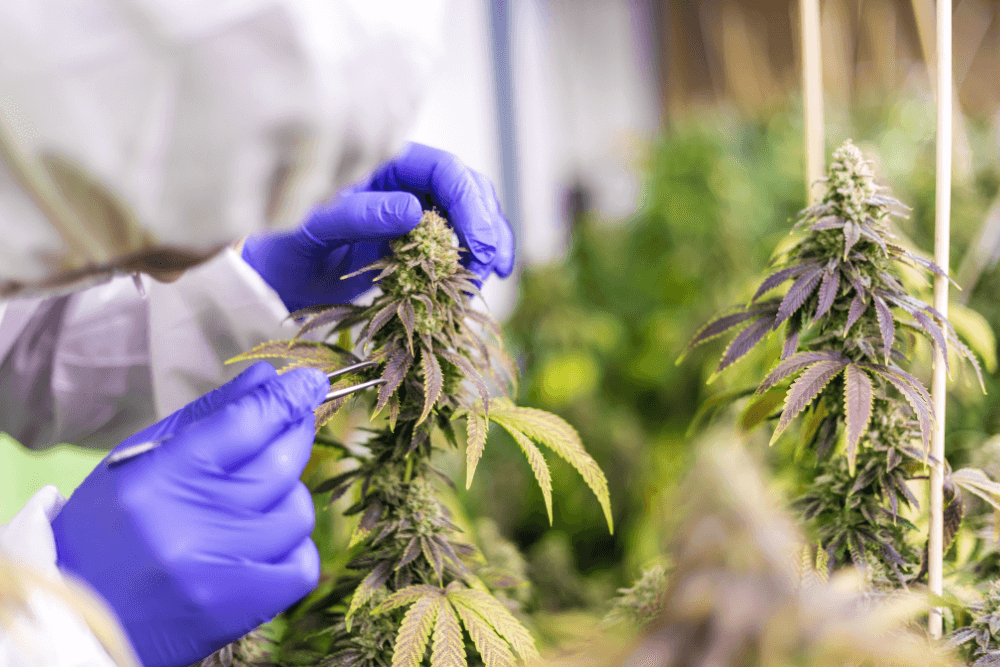
Published by NCIA’s Facilities Design Committee
As the global cannabis industry continues to expand, the importance of international GxP standards becomes increasingly vital. GxP is an umbrella term used to describe the various forms of compliance/standards available: GMP, GACP, GMCCP (Bedrocan), etc. While GMP is typically associated with the manufacturing of pharmaceuticals and other consumer products, it can also be applied to plant cultivation (GACP). These guidelines were developed by the World Health Organization (WHO) in 2003; they help ensure the quality, safety, and consistency of products, fostering consumer trust and facilitating international trade. In this blog post, we will explore the key considerations and requirements for cultivating cannabis in accordance with international GxP standards, allowing cultivators to meet the stringent regulatory expectations across borders.
GMP vs. GACP: What’s the difference?
First, it is important to explain the difference between GMP and GACP: GMP (Good Manufacturing Practice) is a set of quality management and manufacturing guidelines and regulations that ensure pharmaceutical, food, and medical device products are consistently produced and controlled according to quality standards. It aims to minimize risks involved in production and ensures the safety, efficacy, and quality of the final product. GACP (Good Agricultural and Collection Practices) is a set of guidelines and principles used in the cultivation and harvesting of medicinal and aromatic plants. It ensures that the plants are grown, collected, and processed in a manner that maintains their quality and prevents contamination, ultimately ensuring the safety and effectiveness of herbal products derived from these plants.
GxP Best Practices for Cannabis Facilities
Generally speaking, GACP applies to the “cultivation zone” and is less expensive to implement; GMP standards should be used in all “post-harvest zones” and is considered pharmaceutical grade. Below you will find a set of considerations and best practices used in most compliant cannabis facilities.
- Compliance with Regional Regulations: Before embarking on cannabis cultivation, it is essential to understand and comply with the specific regulations governing cannabis production in a specific region. Different countries have varying laws and requirements surrounding cannabis cultivation/export, including licensing, permitted cultivation methods, quality control, and product labeling. Familiarize yourself with the applicable regulations (in the country you intend to cultivate in and the country you intend to supply) to ensure full compliance with international GxP standards. Then organize a meeting (pre-audit) with your local audit provider (e.g. ASTM) to develop a proper gameplan.
- Facility Design and Maintenance: A crucial aspect of GxP compliance is having a well-designed cultivation facility that prioritizes cleanliness, efficiency, and product integrity. Considerations include proper airflow and cannabis specific HVACD systems (e.g. InSpire.ag or Ceres GH Solutions), dedicated cultivation and processing areas, appropriate lighting, appropriate drying space, automation and adequate pest control measures. Maintaining a clean and organized facility with strict hygiene protocols is essential for preventing contamination and ensuring the quality of the final cannabis products. Water quality, flexible cultivation integration, and sustainability should be top priority when in the design phase of your project.
- Crop Management System (CMS): Incorporating an all-inclusive CMS into your agricultural practices brings numerous benefits to crop monitoring and management. Real-time data collection, remote monitoring, disease detection, true seed-to-sale tracking, employee workflow tracking, certificate of growth analysis, predictive analytics, automated irrigation (based on real time plant weight), and historical data analysis collectively enhance a cultivator’s ability to monitor crop progress effectively. By making informed decisions based on accurate data and insights, cultivators can optimize crop growth, increase productivity, and promote sustainable farming practices. Embracing a good CMS (e.g. WeightSense Adapt), while leveraging the power of a Building Management System (BMS) is undoubtedly the best step forward towards advanced compliance, safer product and higher consistency/quality.
- Seed and Genetics: Selecting high-quality seeds or clones with desirable traits is vital for successful cannabis cultivation. When sourcing genetics internationally, it is crucial to consider the origin and reputation of the supplier. Ensure that the genetics comply with regional regulations and are free from pests, diseases, and genetic abnormalities. Match phenotypes with your specific environment to naturally defend against some of these risks. Proper documentation and traceability of seed sources are essential for GxP compliance and product consistency. In-house tissue culture labs bring a host of complexity to your propagation department although provide true consistency and reduced disease if carried out properly.
- Cultivation Practices: GxP-compliant cultivation practices focus on ensuring consistency, purity, and traceability (e.g. CMS) throughout the cultivation process. Considerations include standardized cultivation techniques, such as appropriate nutrient management, integrated pest management (IPM), water quality control, and sanitation procedures. Documentation of cultivation activities, such as crop inputs, environmental conditions, and pest management interventions, is essential for traceability and quality control purposes. As an example, under-canopy lighting (e.g. Thrive Agritech) can help reduce pests, disease, and labor input, all while increasing your yield and product quality.
- Post Harvest Practices: GxP in post-harvest forms the cornerstone of ensuring the quality and safety of agricultural products after harvesting. These practices use a range of vital considerations, including stringent hygiene and sanitation protocols to prevent contamination, comprehensive worker training to uphold proper handling techniques, implementation of effective traceability systems for accountability, meticulous quality control measures for sorting and grading, and the maintenance of optimal storage conditions encompassing temperature and humidity control. The integration of pest and disease management strategies, robust packaging selection, documentation upkeep, and cross-contamination prevention further validate the post-harvest GMP framework. By focusing on these key principles, producers safeguard product integrity, enhance shelf life, and contribute to the overall safety of cannabis in the supply chain.
- Quality Control and Testing: International GxP standards emphasize robust quality control measures throughout the cultivation process. Implementing comprehensive testing protocols for cannabinoid potency, microbial contaminants, heavy metals, residual solvents, and pesticide residues is crucial. Regularly analyze samples from each batch to ensure compliance with international quality standards and regulatory requirements. Establishing relationships with accredited testing laboratories can aid in obtaining accurate and reliable test results. Consider SAP analysis and run-off testing if you would like to maximize your situational awareness and plant health.
- Documentation and Record Keeping: Accurate documentation and record-keeping are essential components of GxP compliance. Maintain detailed records of cultivation activities, including seed sourcing, cultivation inputs, environmental conditions, pest management, testing results, and batch-specific information via proper SOP (standard operating procedures) development. These records serve as evidence of adherence to GxP standards and facilitate regulatory inspections, product recalls, and traceability in the event of any issues. Most importantly, they help cultivators maintain a safe and stable facility.
- Additional Considerations Include: Worker training, regulated plant-tracking system, inventory control, storage conditions, packaging, handling and cross-contamination practice, waste management and continuous improvement.
In part two of this GxP blog, we explain the matrix between these interlocking subject matters and how/where they relate to GxP based on department (so keep a look out for part two).
GxP Standards: Bringing It All Together
Cultivating cannabis in accordance with international GxP standards is crucial for ensuring the quality, safety, and consistency of cannabis products across borders. Adhering to regional regulations, designing and maintaining a GxP-compliant facility, selecting high-quality genetics, implementing standardized cultivation practices, conducting rigorous testing, and maintaining comprehensive documentation are all integral to achieving international GxP compliance. And of course, engage a local GxP specialist with experience in the cannabis field to help navigate your team to success. By prioritizing these considerations, cultivators can position themselves for success in the global cannabis market while meeting the requirements of regulatory authorities and ensuring consumer confidence in their products. It’s time to be a part of the solution, and help break the stigma that comes with cannabis cultivation and manufacturing.
Member Blog: Management Science Associates, Inc. Leads Research Initiatives Alongside Vireo Health

Contributing Authors: Geoff Atkinson, Senior Data Analyst, Management Science Associates, Inc. | Madeline Grant, Business Development Manager, Management Science Associates, Inc. | Paloma Lehfeldt, Director of Medical Education, Vireo Health
One of the promising uses for medical cannabis is treating chronic pain, potentially reducing or replacing prescription opioids and thus reducing the number of overdoses and deaths. Due to the legal status of cannabis and its schedule 1 status on the Controlled Substance Act, there has not been a significant amount of clinical research into its efficacy as a replacement or adjunct therapy for opioids, or its optimal dosing. Unfortunately, due to the lack of research and data there remains uncertainty for patients’ access to pain management and relief through cannabis. The limited research and data availability create uncertainties around patients’ access to cannabis for pain relief. Considering this, Management Science Associates, Inc. (MSA) has taken the initiative to collaborate with cannabis operators such as Vireo Health, aiming to investigate the impact of cannabis consumption on patient health outcomes by utilizing real-world healthcare data. This empirical data is crucial for enhancing our understanding of the complexities surrounding cannabis usage.
MSA and Vireo Health Study
MSA partnered with Vireo Health of Minnesota to complete a first of its kind study for Minnesotan medical patients in the state’s programs. We focused on several hundred customers from eight Vireo dispensaries across Minnesota. Using MSA’s patented de-identification software the data reflected that customers of eight dispensaries in Minnesota reduced their legal opioid usage by an average of 30%. A comprehensive analysis illustrated that these customers, on average, consumed 115 mg of morphine equivalent (MME) per month to their initial cannabis purchase. During the period of cannabis consumption, this figure decreased to 80 MME/month, representing a significant 30% reduction. Notably, opioid prescriptions reverted to higher levels after customers completed their final cannabis purchase. While individual circumstances may necessitate specific medication usage, aggregating data over larger cohort allows for capturing overarching trends.
Once we established, in this particular data set, cannabis may aid in reducing opioid use, we examined additional contributing factors in more detail to determine which patients had the most success. Using MSA’s patented de-identification technology, an individual’s cannabis purchases was matched with their prescription records while maintaining the confidentiality of personal health information. Understanding the connection between cannabis purchasing trends and medical outcomes could be very valuable in making informed decisions about dosing and connecting customers to the products that most effectively meet their particular needs. With the limited clinical research in particular randomized control trials in the United States, there is not nearly as much of this kind of information available for cannabis as there is for more traditional pharmaceuticals. Studies like this are crucial to gather credible data for medical patients to purchase and consume the correct products and dosage.
Continued Results of the MSA and Vireo Health Study
One initial observation is that the impact of cannabis on opioid prescriptions is different for different age groups. Individuals under the age of 45 experienced a 47% decrease in opioid prescriptions, while the 45–64 age group saw an average drop of 35%. Those over the age of 65, who tended to have the highest amount of opioid prescriptions across all three time periods, saw no significant decrease during the time they were purchasing cannabis. There were small differences between men and women. Women used more prescription opioids overall but saw a slightly greater percentage decrease when they began purchasing cannabis.

These differences may be related to different demographic groups preferring different forms of cannabis. The table below shows several forms where there were significant differences in percentage of total cannabis spending by age or by gender. For example, younger customers spent more on vape cartridges, and males tended to spend more on flower.
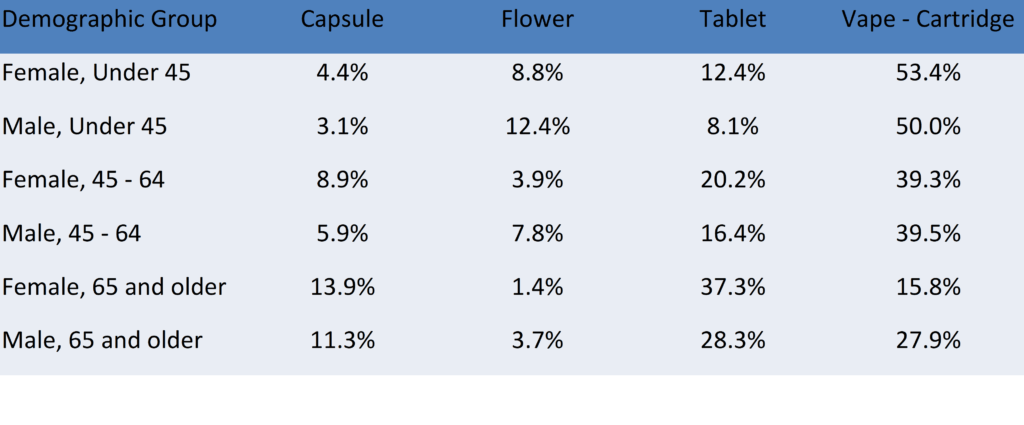
Interestingly, there appears to be no substantial correlation between the total amount of THC purchased and the successful decrease in opioid prescriptions. There was high variation between individuals, but the group of patients who succeeded in reducing their opioid prescriptions purchased an average of 418 mg of THC per month. Those who showed no decrease in opioid prescriptions purchased an average of 563 mg of THC per month. However, those who successfully reduced their opioids did show a preference for products with a high ratio of THC:CBD, spending over 70% of their cannabis budget on products with a ratio of 19:1 or higher.
We also examined the connection between different forms of cannabis and patients’ decrease in opioid prescriptions. One interesting way to divide patients is whether they focused on buying one form of cannabis or sampled many different products to find something that would benefit them. Patients who spent over 60% of their total cannabis budget on one form saw an average decrease of 16% in their opioid prescriptions. Patients who were less focused on one form saw an average decrease of 44%. A conflating factor in this analysis is that customers who purchased many different forms of cannabis also tend to have longer periods of cannabis usage. Customers who tried one or two forms of cannabis averaged 136 days between their first and last purchase. Customers who tried three or four forms of cannabis averaged 342 days. Customers who tried five or more forms of cannabis averaged 833 days.
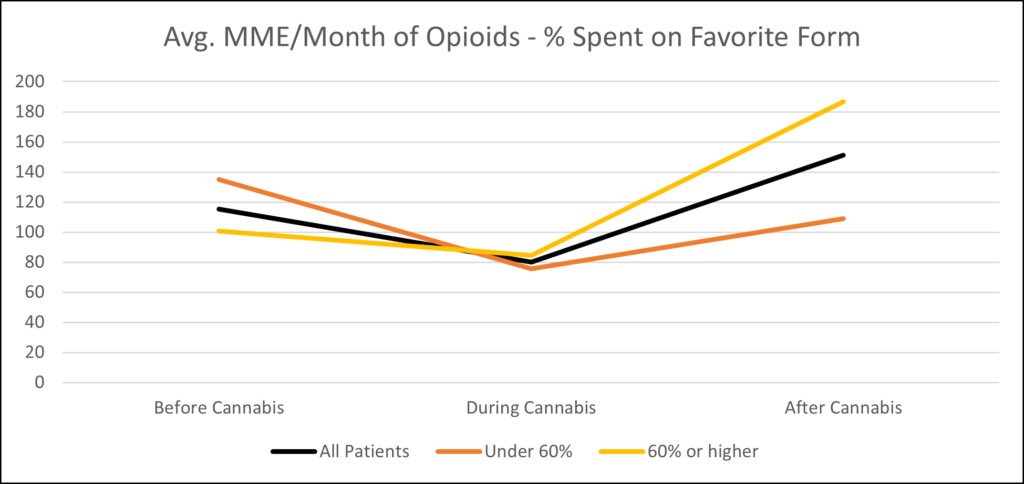
Another way to study the efficacy of particular forms of cannabis is to group patients by their preferred form. For example, customers who spent the majority of their cannabis budget on capsules saw a 63% reduction in opioids while those who preferred tablets saw a 34% decrease. Customers who purchased mostly vape products (the most popular form in these particular dispensaries) saw a 28% decrease, but less rebound towards earlier levels after they stopped purchasing cannabis. Some of these analyses are less statistically significant because of the relatively small number of customers in each group.
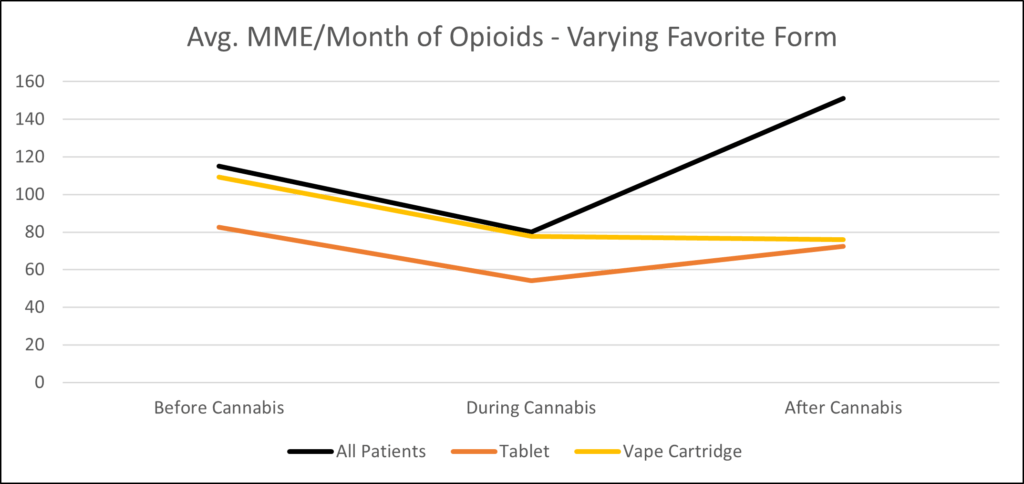
Next Steps
While these preliminary findings are intriguing, they underscore the necessity for further research. MSA will continue to look at cannabis customers across multiple states, where different types of products may be available, which might either reinforce our findings, or illuminate some interesting differences between customers in different markets. Looking at more total customers would increase the significance of the findings relating to customers’ preferred forms of cannabis, which would be very helpful in pointing future customers towards the products most likely to help them. MSA will continue to work with cannabis companies, healthcare professionals, advocates, and policymakers across the United States to conduct studies and continue to share reliable data with the cannabis industry.
If you are interested in learning more or getting involved with MSA by being a prominent leader in medical cannabis research, we’d love to hear from you. You can reach out to Madeline Grant at mgrant@msa.com to schedule an introductory call.
Member Blog: The Importance of PCI Compliance for Cannabis Payments at a Dispensary

The cannabis industry has witnessed exponential growth recently, with legalizations sweeping across various states. The demand for cannabis products is soaring, prompting dispensaries and retailers to explore the convenience of digital payment solutions to meet customer preferences. However, in this rapidly evolving landscape, compliance with industry regulations is paramount, especially when processing cannabis payments securely. This blog post delves into the significance of PCI compliance for dispensary payments, highlighting the potential penalties for non-compliance and the need for a fully compliant cannabis payment processing solution.

The Booming Cannabis Market and the Rise of Digital Payments
The growing cannabis market has paved the way for cannabis retailers and dispensaries to embrace digital payment options to cater to their customers’ convenience and preferences. As more consumers seek cashless and contactless payment methods, integrating digital payments into dispensary operations has become essential. However, the dynamic nature of the cannabis industry requires strict adherence to security and compliance standards.
Understanding Cannabis PCI Compliance and its Significance
PCI DSS (Payment Card Industry Data Security Standard) is a set of security standards designed to protect cardholder data during payment processing. Compliance with PCI DSS is mandatory for all organizations that accept, process, store, or transmit credit card information. In the cannabis industry, where the risk of fraud and cyber threats is high and consumers are more reluctant to share personal information, adhering to PCI compliance is crucial for safeguarding sensitive customer data and maintaining trust with your clientele.
Risks of Inadequate Cannabis Payment Processing Solutions
Using inadequate or illegal payment processing solutions like cashless ATMs, that are not fully compliant with PCI standards poses significant risks for cannabis retailers. Such solutions may leave cardholder data vulnerable to hacking attempts and data breaches, leading to financial losses and damage to the dispensary’s reputation. As the cannabis industry attracts attention from cybercriminals, investing in a robust and PCI-compliant payment processing solution becomes a proactive step towards safeguarding your dispensary’s future.
Penalties for Non-Compliance with PCI for Dispensary Payments
Failing to comply with PCI DSS can have severe consequences for cannabis retailers and dispensaries. All major digital payment processing companies enforce compliance and may impose substantial fines on businesses that do not meet the required regulations. These fines can range from thousands to hundreds of thousands of dollars per month, depending on the severity of the breach. Additionally, non-compliant businesses may face reputational damage, customer loss, and legal actions, potentially threatening the very existence of your dispensary.
The Role of PCI Compliance in Building Customer Trust
Customer trust is paramount in any business and the cannabis industry is no exception. When customers choose to shop at a dispensary, they expect their personal and financial information to be handled securely. Compliance with PCI DSS standards protects cardholder data and instills confidence in customers that their transactions are safe and their privacy is respected. Building this trust fosters loyalty and encourages repeat business, ultimately benefiting your dispensary’s bottom line.
Choosing a Compliant Cannabis Payment Processing Solution
To mitigate the risks associated with non-compliance and ensure that digital payments are processed securely, cannabis retailers must prioritize using a fully compliant payment processing solution. A reputable payment provider specializing in the cannabis industry can offer end-to-end encryption, tokenization, and secure payment gateways to protect sensitive customer data. By partnering with such a provider, dispensaries can process transactions safely and enhance customer trust without worrying about regulatory pitfalls.
A compliant cannabis payment processing solution is a non-negotiable requirement for dispensaries to stay ahead in this competitive landscape. Compliance is crucial, but various other considerations must be taken into account when choosing a cannabis payment processing solution. Cova’s free dispensary payments guide is a great resource to learn more about seamlessly transitioning to cashless payments. By embracing PCI DSS standards and prioritizing secure payment processing, cannabis dispensaries can foster customer trust, comply with industry regulations, and propel their growth in this exciting and evolving market.
Member Blog: Transforming Your Cannabis Business with Modern Experiences
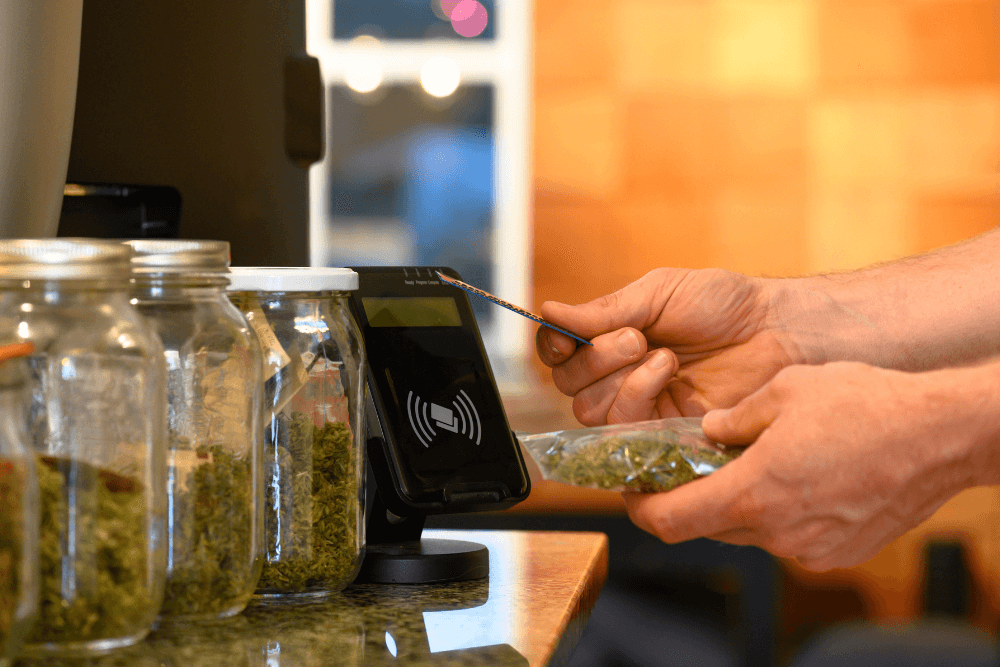
The cannabis market is growing globally at a considerably good pace. According to studies, did you know that increasing legalization, favorable cultivation norms, and the use of technology are some of the factors promoting the development of the cannabis industry?
Due to this, many researchers are projecting the growth of this market from $43.2 in 2022 to $72 billion in annual sales by 2030. While the industry as a whole is growing, however, some businesses are looking for ways to bring something new to customers.
But the question is, when change is the only constant in this market, how can you do it right? Well, don’t worry because we’re here to help.
This article mentions a few tips and suggestions on transforming your business with modern experiences and growing your profits. Let’s dig in!
Install Kiosks for a Better In-Store Experience
One of the best modern ways to elevate your cannabis store is to introduce user-friendly kiosks. These will help your customers find everything easily in the store.
Moreover, you can also increase the product range with these kiosks. For example, if you sell dry herbs, you can also place a station for pre-roll cones to transform into a one-stop store. You can buy pre-roll cones in bulk and make an addition to your business.
It will increase your customers’ convenience and boost your sales for better profits. So, invest in kiosks to transform the in-store experience and align with today’s shopping trends.
Embrace Technology
Another key player in providing a modernized experience to your customer is leveraging technology for your business. You should invest in user-friendly apps and convenient online delivery services to elevate customer experiences.
It is a great way to tap into the target group that seeks convenience and accessibility. Busy schedules often keep people busy, and they may not get the time to visit stores. Thus, providing an app to place orders makes it easier for them.
Likewise, you can consider further offering 24/7 delivery services to accommodate varying schedules and situations. It will not only increase your customer base but also help you stand out among your competitors.
Workshops and Events
Embrace a fresh approach to your cannabis business transformation by hosting workshops and events. It greatly enhances modern experiences. These gatherings help establish strong customer relationships and bring mutual benefits.
For customers, it’s a chance to learn, explore, and connect with fellow enthusiasts. They gain valuable insights into your products and their uses. Your business, in turn, gains loyalty and trust by offering educational and interactive opportunities.
You can conduct these events online and offline according to the demand. You can also introduce games, outings, and more for the community. Moreover, to enhance it further, you can also offer special discounts to the ones who attend your events. This positive connection leads to repeat visits and word-of-mouth recommendations.
Bottom Line
We hope the above information helps you modernize your cannabis business for success. You can use kiosks for easy shopping, embrace technology for convenience, and host engaging workshops. This builds happy customers and loyalty. These steps cater to changing preferences and show you’re a leader.
Member Blog: Cannabis Strain, Cultivar, or Variety? What Is the Correct Term?
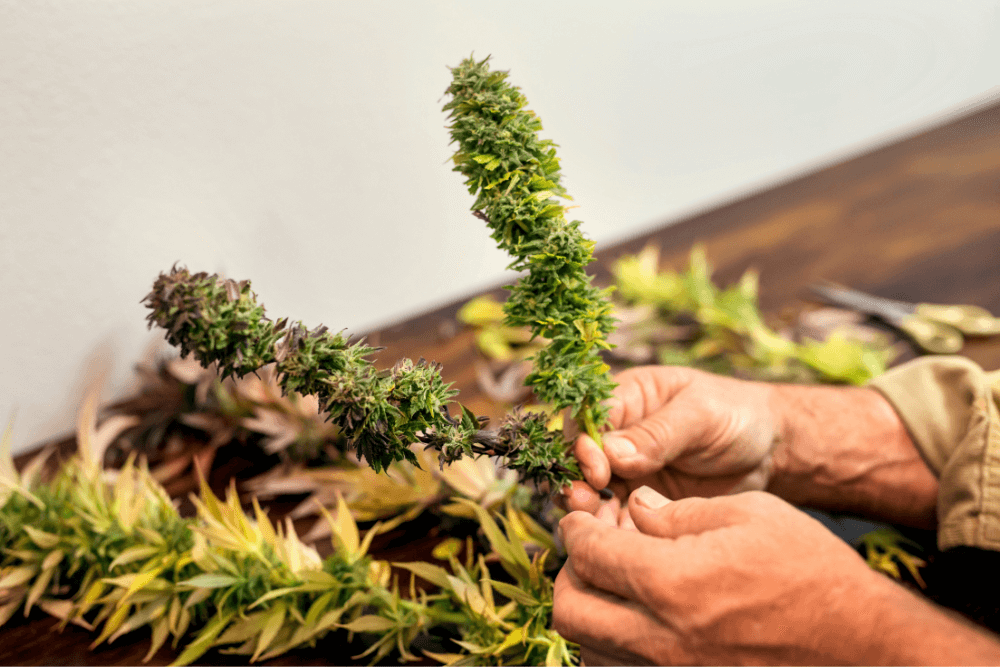
In cannabis cultivation, one often comes across the terms ‘strain,’ ‘cultivar,’ and, more commonly, ‘variety’ to describe the multiple variants of this versatile plant. While these terms are sometimes used interchangeably, it is crucial to acknowledge that each carries a unique significance. Accurate communication is truly important in this dynamic field, and gaining a comprehensive understanding of these differences is essential. In this article, we embark on a journey to unravel the dissimilarities among strain, cultivar, and variety in cannabis cultivation, shedding light on the nuances that shape this captivating community.
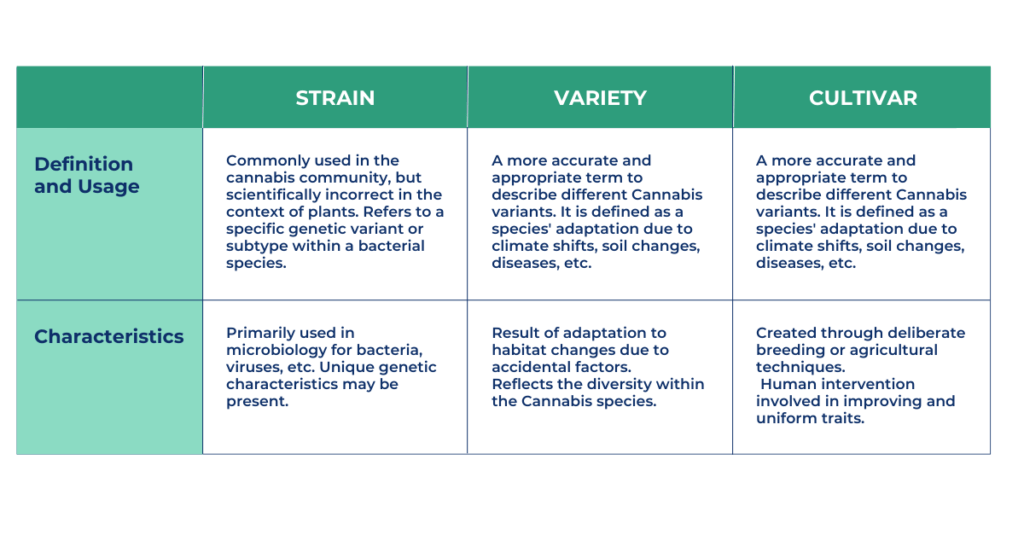 Strain
Strain
Commonly used in the cannabis community, the term “strain” is not entirely accurate when referring to variants of the Cannabis species. In scientific contexts, “strain” is primarily used in microbiology to discuss bacteria, viruses, and fungi (Russo, 2019). For example, in bacteriology, a “strain” refers to a specific genetic variant or subtype within a bacterial species. Each strain may have unique genetic characteristics, such as the presence of specific genes (Dijkshoorn et al, 2000).
However, when it comes to plants like Cannabis and plants in general, the use of the term “strain” is not appropriate, as it is a word reserved for the realm of microbiology. Therefore, we should avoid using it when referring to different variants of Cannabis species.
Variety
The term “variety,” on the other hand, provides a more accurate and appropriate way to describe different cannabis variants. The term “variety” is defined as a species’ adaptation resulting from changes in its habitat due to accidental factors such as climate shifts, soil changes, the presence of diseases, insect attacks, nematodes, and other similar influences (Arévalo et al., 2006). Therefore, when discussing different types of cannabis, “variety” is the most accurate term to use.
Cultivar
To avoid confusion with the botanical term “variety,” the term “cultivar” was coined. It is a combination of “cultivated variety,” shortened to “cultivar” (Arévalo et al, 2006). Unlike varieties, cultivars are not products of natural evolutionary processes. Instead, they are created through deliberate breeding or agricultural techniques to have improved and uniform traits (Tooker et al, 2012). This distinction is crucial, as it highlights the human intervention involved in developing specific plant traits and characteristics.
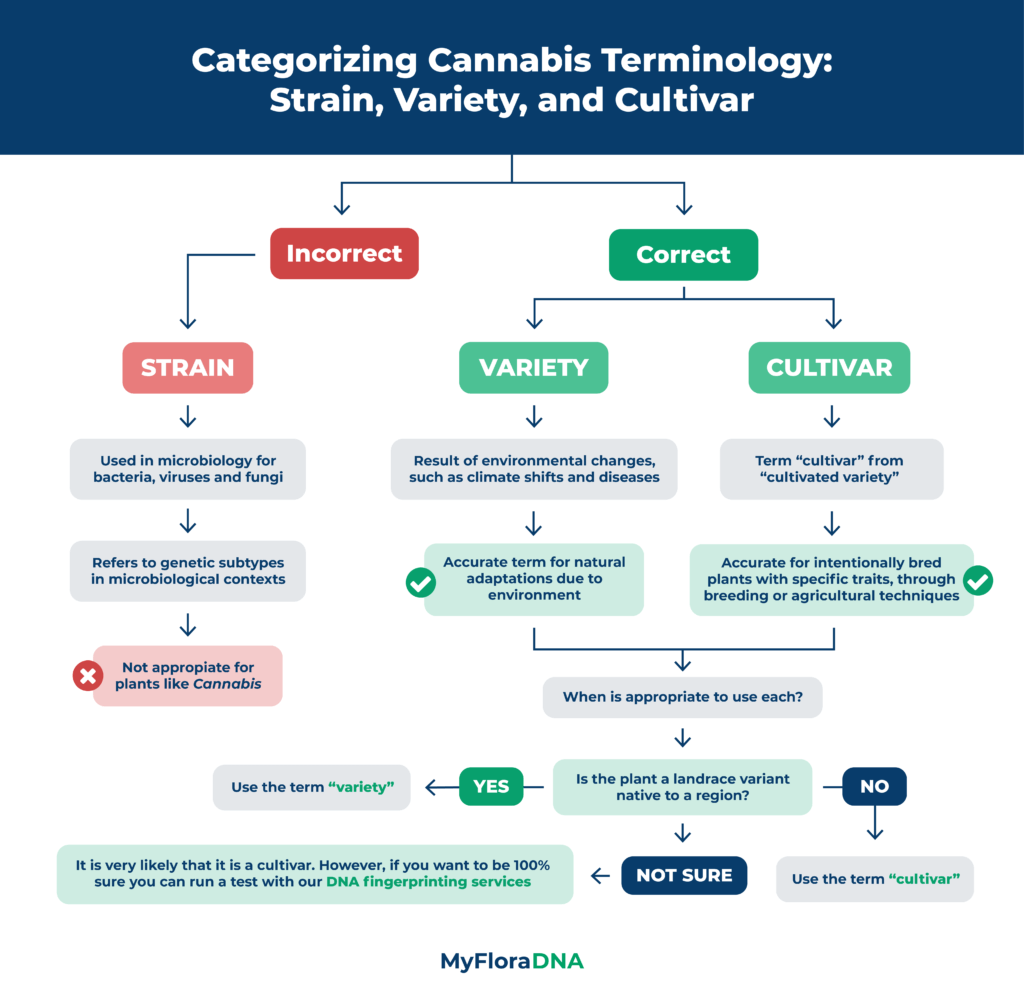
But, how important is it to distinguish between cultivar and variety in Cannabis? In the context of Cannabis, differentiating between cultivars and varieties is essential. Varieties refer to naturally occurring adaptations of the plant due to environmental factors, while cultivars encompass those that have been intentionally bred and developed by humans. For example, a landrace variant found growing naturally in its native region would be considered a variety, whereas a hybrid variant carefully created through crossbreeding different varieties would be classified as a cultivar.
Finally, why should we care about using the correct terminology? Understanding the distinctions between “strain,” “variety,” and “cultivar” is more than just semantic pedantry; it has practical implications for various stakeholders:
- Scientific accuracy → Employing correct terminology helps maintain scientific integrity and clear communication among researchers, botanists, growers, nurseries, and enthusiasts. All must adhere to precise terminology to communicate effectively, exchange knowledge, and avoid misunderstandings.
- Consistency → Consistent use of the terms “variety” and “cultivar” promotes a unified understanding within the cannabis community and the broader horticultural and botanical fields. Standardizing the usage of these terms will aid in streamlining scientific research, regulatory practices, and consumer education within the cannabis industry.
- Preservation of biodiversity → Understanding and distinguishing between natural varieties and cultivated cultivars contribute to the preservation of Cannabis biodiversity.
In summary, although the terms “strain,” “cultivar,” and “variety” are frequently used interchangeably in the cannabis community, they hold distinct meanings. Recognizing the proper usage of each term is essential to enhance clarity and ensure accurate communication. By understanding the differences between these terms, we can better appreciate the diverse and captivating world of cannabis, as well as the diligent efforts invested in developing unique and desirable cultivars.
References
Arévalo, R. A., Bertoncini, E. I., Guirado, N., & Chaila S.. “Los términos cultivar o variedad de caña de azúcar (Saccharum spp.).” REVISTA CHAPINGO SERIE HORTICULTURA, vol. 12, no. 1, 2006, pp.5-9. Redalyc, https://www.redalyc.org/articulo.oa?id=60912102
Dijkshoorn, L., B. M. Ursing, and J. B. Ursing. “Strain, clone and species: comments on three basic concepts of bacteriology.” Journal of medical microbiology 49.5, 2000, p. 397-401. https://doi.org/10.1099/0022-1317-49-5-397
Mostafaei Dehnavi, Mahboubeh, et al. “THC and CBD Fingerprinting of an Elite Cannabis Collection from Iran: Quantifying Diversity to Underpin Future Cannabis Breeding.” Plants, vol. 11, no. 1, 2022, p. 129, https://doi.org/10.3390/plants11010129
Russo, Ethan. “The Case for the Entourage Effect and Conventional Breeding of Clinical Cannabis: No “Strain,” No Gain.” Frontiers in Plant Science, vol. 9, 2019, p. 434025, https://doi.org/10.3389/fpls.2018.01969
Tooker, John, and Frank, Steven. “Genotypically Diverse Cultivar Mixtures for Insect Pest Management and Increased Crop Yields.” Journal of Applied Ecology, vol. 49, no. 5, 2012, pp. 974-985, https://doi.org/10.1111/j.1365-2664.2012.02173.x
Committee Blog: Your Voice Matters – Advocate for Crucial Changes in the American Hemp Industry

Published by NCIA’s Hemp Committee
The Hemp Industry needs your help. The 2018 Farm Bill, which made it legal to grow and process hemp, was a big step forward for the larger Cannabis industry. After the bill passed, lots of growers, processors, and manufacturers started building the Hemp Industry. Like any new industry, it’s had its ups and downs. But there are some big roadblocks that Congress can remove to help the Hemp Industry grow and set the stage for better rules around all Cannabis in the future.
2023 is a crucial year for American hemp producers as the 2018 Farm Bill is due to expire. Congress is now drafting a new Farm Bill that will direct our agricultural and food systems for the next half-decade. During this critical period, the NCIA Hemp Committee is working tirelessly to rally support for amendments that will not only benefit the industry but also our customers. Our requests are as follows:
- Update the legal definition of hemp to allow for up to 1% Total THC: This would offer critical protection for farmers and processors, as the current legal limit can sometimes be exceeded naturally in the crop growth process, leading to crop loss and financial hardship.
- Support the Growth of the Hemp Industry by Encouraging Banking and Lending Services: The Treasury department should provide written guidance for banking and lending services to hemp-related businesses, removing barriers to growth in this burgeoning industry.
- Support HR 3755 for Non-consumable Hemp: By recognizing the distinction between consumable and non-consumable hemp products, we can encourage the development of a wide range of industrial applications for hemp, from textiles to building materials.
- Prevent Misuse of THC by Teens and Young Adults: This requires comprehensive educational initiatives to provide accurate information about THC and its potential effects. In doing so, we can ensure that the growth of the hemp industry does not inadvertently lead to misuse of THC among young populations.
During the recent NCIA Lobby Days, we had constructive meetings with influential decision-makers, including members of the Agricultural Committee and their staff. Our team left these sessions with a sense of hope and determination, having shared our top four priorities and discussed other important issues. Now, we’re calling on you, the supporters of the Hemp Industry, to make your voices heard and contact your members of Congress to showcase broad support for these initiatives.
“NCIA Lobby Days provides the stage and podium, and you bring the voice. We meet with decision makers (congressional staff) who ARE interested in our real-life scenarios, and it educates them to educate their Senate and House of Representative leaders. Education is power. It (Lobby Days) also provides an environment to meet like-minded people in the cannabis industry, share our stores, learn/educate, and collaborate. I plan to attend each year as it is enlightening and empowering!” Jillian Johnson
How can you help?
Remember, members of Congress are elected to represent the interests of their constituents – that’s you. But they can only effectively do so when they’re fully informed about the issues that matter to you. Your voice is powerful and essential to our democratic process. By speaking up, you can provide important insights and help shape the future of the Hemp Industry.
- Send an email to your members of congress.
- Reach out directly to your Representative and Senators
Breaking Down the Recent Cannabis Rescheduling Recommendation

For more than fifty years, the federal government has maintained that cannabis is a Schedule I drug, meaning that it has a high potential for abuse and no accepted medical value. That changed last week (somewhat) when the Department of Health and Human Services (HHS) recommended to the Drug Enforcement Administration (DEA) that cannabis be placed in Schedule III, meaning that it has moderate to low abuse potential, a currently accepted medical use, and a low potential for psychological dependence.
Why now?
In October 2022, the Biden Administration announced that it would ask the Secretary of HHS and the Attorney General to initiate the administrative process to review expeditiously how marijuana is scheduled under federal law. As the Brookings Institute outlined years ago, the Executive process for rescheduling is much more complex than the Legislative path.
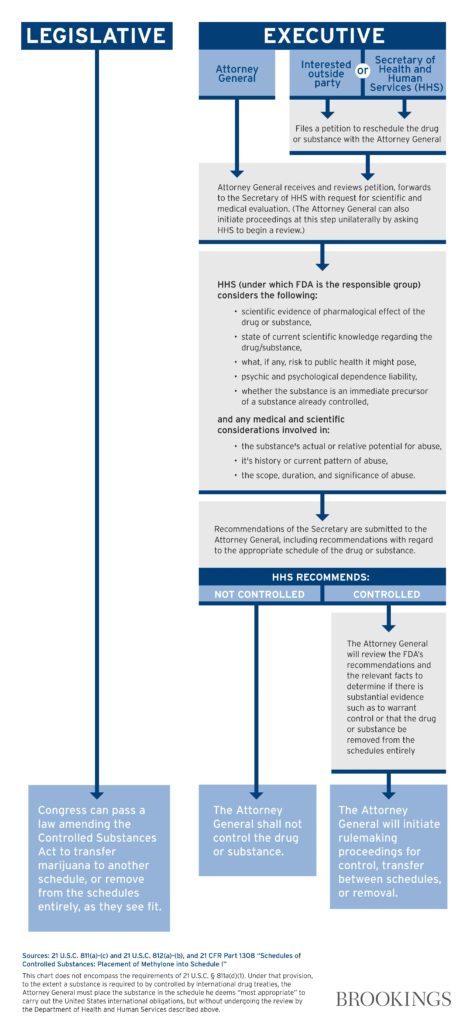
It’s no secret that the presidential election is barely more than a year away, and the President seems to be looking to make good on his campaign promise to reform the nation’s marijuana laws.
What does this mean?
First off, it’s critical to note that HHS’ recommendation to DEA is just that: a recommendation. It is non-binding. The DEA may come to the same conclusion that HHS did, but is not required to.
If cannabis is moved to Schedule III of the Controlled Substances Act, one positive outcome would be that 280E would no longer apply to plant-touching businesses, removing an incredibly punitive and debilitating provision in the tax code.
According to NCIA’s board chair emeritus, Khurshid Khoja, Esq., “…it’s important to remember that rescheduling would not apply the federal Food Drug and Cosmetic Act (FDCA) to marijuana for the first time—it applies right now, and like the federal Controlled Substances Act (CSA), would continue to apply after rescheduling. But absent any statutory authority permitting FDA to do otherwise, the FDCA would continue to apply after descheduling too, just as it does to hemp products.”
Others claim that the shift to Schedule III would have minimal impact on businesses and individuals. Here at NCIA, we’re cautiously optimistic but recognize that moving cannabis to schedule III could have some limited benefit but does nothing to align federal law with the 38 U.S. states which have already effectively regulated cannabis for medical or adult use.
What now?
Now that HHS has made their recommendation, the DEA will begin its scheduling review process.
Many are divided about what a move to Schedule III would actually look like. Yes, there would be the elimination of 280E, but what about enforcement priorities? Interstate commerce? Criminal penalties? There are so many unknowns.
NCIA has previously produced a common sense, workable roadmap for that federal comprehensive reform and provided detailed feedback on legislative efforts. It is time for Congress to follow the will of the American people. Don’t get me wrong, there’s no doubt that this recommendation is a step in the right direction and is long overdue. But we can’t lose sight of the ultimate goal: removing cannabis from the Controlled Substances Act entirely.
Have questions?
Join NCIA on September 14 at 1 pm ET for an engaging webinar where we will unpack all your questions! Register today and don’t miss your chance to hear more about what this means for the cannabis industry and your business.

Committee Blog: Why 1% Total THC Could Open New Doors for the Hemp Industry

Published by NCIA’s Hemp Committee
As we look forward to the 2023 US Farm Bill, there’s a substantial opportunity to modify the regulations around hemp cultivation and usage. Adjusting these regulations can stimulate the growth of the hemp industry while still ensuring consumer safety. The potential of hemp as an agricultural product is vast, with applications including food, fuel, fiber, building materials, grain, and medical use. It’s important to note that while cannabinoids often dominate the headlines, they make up only a small slice of the industry’s potential size.
Experts predict that incorporating hemp into cosmetics, construction materials, and textiles could catapult the industry to over $1 trillion in annual sales. However, the current regulations pose significant challenges to this innovative industry’s expansion, especially for conscientious farmers. The fear of having their crops destroyed because of slightly exceeding a set THC limit is a serious obstacle.
At present, the definition of hemp rests on a Total THC limit of 0.3%, a figure chosen in the 1970s for classification purposes, not for assessing the plant’s psychoactive effects. Bumping this limit up to 1% Total THC would have a negligible impact on impairment but could have a monumental effect on farmers’ operations.
Research from 2020 by the University of Illinois, University of Wisconsin, Michigan State University, and Purdue demonstrated that more than half of the common hemp varieties could surpass the Total THC limit under certain conditions. However, this research also revealed that only 4% would breach the limit if it were raised to 1%.
Growing hemp that exhibits desirable traits for industrial uses, like a long straight stalk, high fiber, or high seed yield, requires the plant’s full maturation. This maturation is often linked to higher THC profiles. Unfortunately, the current strict conditions and genetic variation restrictions severely limit the plant’s potential applications.
While responsible hemp growers are in favor of state-led regulations for cannabinoid extractions that can cause impairment, it’s clear that an unrealistically low THC limit isn’t the best approach. Other nations, such as Thailand, Mexico, and Switzerland, have already updated their regulations, defining hemp as containing up to 1% Total THC.
By making a small change to the legal definition of hemp, we can unlock the industry’s potential. It will allow farmers across the nation to make the necessary investments to keep pace with an industry set to grow from being worth billions to trillions of dollars. By encouraging this change, we can foster American innovation and boost rural economies, reinvigorating the manufacturing sector in the process. Now is the time to recognize and adapt to the potential of this versatile plant.
How can you help?
Remember, members of Congress are elected to represent the interests of their constituents – that’s you. But they can only effectively do so when they’re fully informed about the issues that matter to you. Your voice is powerful and essential to our democratic process. By speaking up, you can provide important insights and help shape the future of the Hemp Industry.
- Send an email to your members of congress.
- Reach out directly to your Representative and Senators
Member Blog: Quality Buds, Quality Source. Which Is Better, Seeds or Clones?
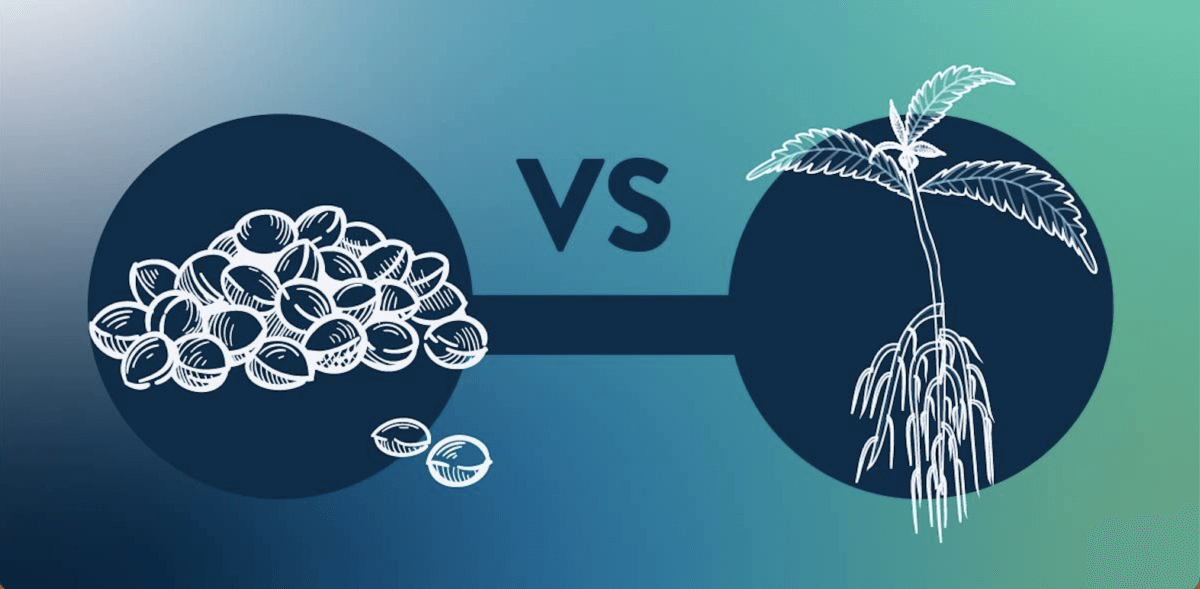
Ask 10 cultivators the best way to grow quality cannabis and you will get ten different answers. From growing medium to nutrients to watering schedule, every cultivator thinks they have dialed in the magic recipe for premium buds. One area where the debate rages is whether it is better to grow from seed or clone. To be fair, both have their pros and cons.
Some prefer to grow from seed because they feel seeds yield a hardier plant, whereas clones are more of a carbon copy of the original; exactly the same but not as vibrant. Thinking about the copy machines of yore, after a few copies, the ink would get lighter and the background less crisp. Some claim that clones provide the same experience. Another benefit to growing from seed is breeding. Since clone mothers are female, all their cuttings are female. If a cultivator wants to cross two cultivars, some males need to be added to the mix. For others, the assured female offspring of the mother plant reduces waste and time, as well as the chance that a rogue male will pollinate the garden. Another benefit of growing from clone is that, because it is a carbon copy of the mother, growers can replicate desired strains for the consumer. And while you can procure seeds from a prize-winning cultivar to grow, there is a chance that, like siblings, the final product will be a bit different than the one before.
For home growers, clones may be preferable because the seedling stage is a very vulnerable one for the little plant. I know that I tried to grow from seed unsuccessfully for a year when I first started until I was gifted an adolescent female. On the other side, since seeds have been deemed a hemp product by the DEA due to containing less than .3% THC, they are easier and safer to ship from place to place, which is a bonus for someone in NY who is excited about a strain from CA. And since clones require a mother room if you want to use the same source plant repeatedly, there is a larger space requirement for growing from clone. In the end, the decision to grow from seed or clone will vary from farm to farm, with some farms, commercial or home grow, choosing to do both. According to the 2023 Home Grow Report from New Frontier Data, 44% report growing from seed, 13% from clone, and 40% use both.
How about you? Are you a licensed cultivator who has opinions on whether it’s best to grow from seed or clone? New Frontier Data is conducting a survey of licensed cultivators in the US and Canada, and we want to hear from you! We are especially interested in cultivators from AZ, CA, CO, FL, MI, OH, OK, British Columbia and Ontario, but all licensed cultivators are welcome to complete it! The survey takes about 10 minutes, is confidential, and if you complete it, you will receive a summary of the results in your state AND be entered to win a $100 Amazon gift card! You can take the survey at: https://hubs.la/Q01_0FFm0
Member Blog: Securing Your Cannabis Venture – Mastering Inspections with Comprehensive Cannabis Insurance
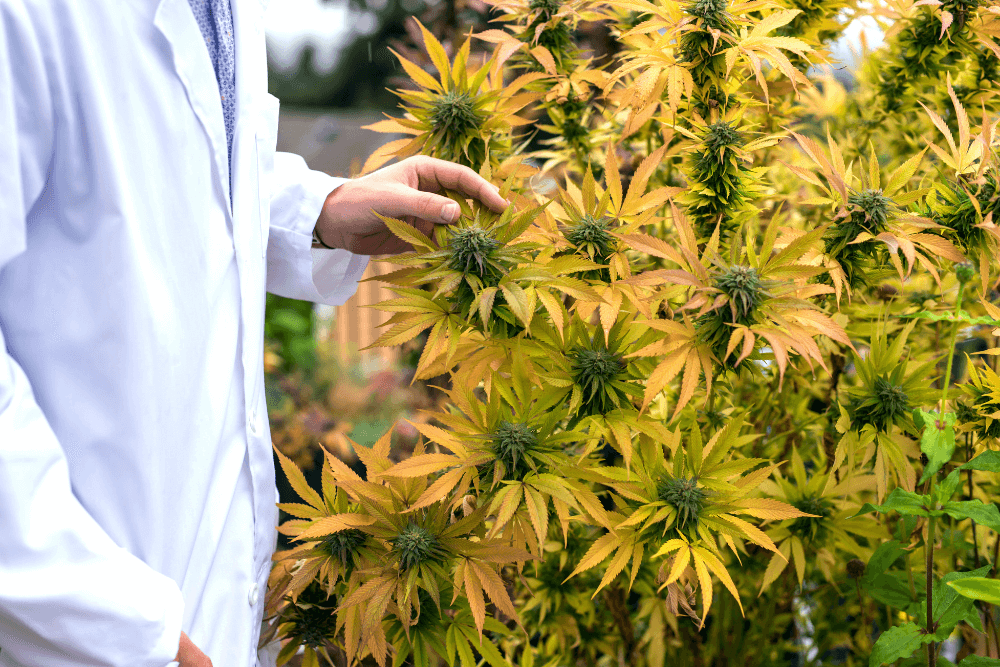
The cannabis industry continues to blaze a trail of growth and innovation, opening numerous opportunities for entrepreneurs and investors. However, this thriving landscape also exposes businesses to unique risks that demand proactive risk management solutions. Insurance plays a pivotal role in safeguarding cannabis ventures from potential losses, making it an essential aspect of responsible business operations. In this blog post, I will explore the critical role of inspections, the challenges they present, and how partnering with a reliable cannabis insurance broker can protect your business interests while mastering the art of inspections.
Understanding the Need for Inspections
The cannabis industry operates under stringent regulations, and inspections are an indispensable component of ensuring compliance. These routine evaluations, carried out by regulatory bodies or insurance carriers, are designed to assess product quality, safety standards, and adherence to legal requirements. While inspections are vital for maintaining high standards within the industry, they also expose businesses to potential vulnerabilities, particularly theft.
The Perils of Theft: Unraveling Insider Threats
As the cannabis industry expands, so does the risk of theft. A concerning issue arises from potential “inside jobs,” where employees or third-party trusted individuals gather sensitive information on-site, posing a significant threat to the operation’s stability. This situation often leads to confusion and concern for clients regarding third-party insurance inspectors who sometimes come on site without communication or vetting.
Clients frequently encounter uncertainty when dealing with these inspectors. They tend to reach out to operators to schedule appointments without confirming the inspector’s affiliation with the insurance carrier or broker. This results in delayed responses, as these calls are often mistaken for telemarketing and disregarded. Unfortunately, this miscommunication can lead to compliance issues with the insurance carrier.
To address this problem, transparent communication between the insurance broker, inspection company, and operator is essential. For example, many clients now ask me to verify the identity of those contacting them before scheduling appointments. I highly recommend this practice to protect clients’ sensitive information.
In this evolving landscape, ensuring security and effective communication is paramount. By taking proactive steps, we can enhance the industry’s growth while safeguarding its integrity.
Transparent Expectations: Building a Solid Foundation
Open and direct communication, coupled with well-defined expectations, serve as the cornerstone for effective inspections within the cannabis industry. My commitment lies in bridging the gap between clients and inspectors, enabling them to familiarize themselves with one another and streamline the scheduling process. A comprehensive comprehension of the inspection procedure, its aims, and the specific areas subject to scrutiny is imperative for businesses. Simultaneously, transparency on the part of insurance carriers regarding inspection protocols and their protective role is crucial for your business’s security.
Embracing a collaborative approach to inspections fosters a strong alliance between businesses and insurers. This synergy guarantees a seamless process that ultimately benefits all stakeholders involved.
Guarding Behind-the-Scenes Details: Protecting Business Operations
In the fiercely competitive cannabis landscape, certain aspects of business operations must be protected with utmost confidentiality. These behind-the-scenes details include proprietary cultivation techniques, security measures, and intricate supply chain arrangements. Recognizing the sensitivity of this information, leading cannabis insurance brokers take extraordinary measures to safeguard such details.
Vetting Inspectors: Fortifying Inspection Security
The integrity of inspection processes begins before any inspector sets foot on your cannabis business premises. Reputable cannabis insurance carriers undertake rigorous vetting of third-party inspection companies to verify their credentials and expertise. This stringent evaluation ensures that inspectors adhere to the highest standards and are committed to protecting your business. In cases where an inspector contacts you directly, it is essential to politely reschedule the inspection and promptly inform your insurance broker.
Aligning Real-Time Risks with Comprehensive Insurance Coverage
Beyond regulatory compliance, inspections serve another vital purpose: assessing real-time risks and aligning them with the insurance coverage outlined in your policy. This strategic alignment ensures that your cannabis business is adequately protected against potential losses. Collaborating with your insurance broker to comprehend the risks inspectors evaluate and their significance empowers you to optimize your risk management strategies. By proactively addressing any coverage gaps, your cannabis insurance policy becomes a reliable safety net, allowing you to navigate the dynamic cannabis industry with confidence.
Addressing Unique Industry Challenges: Tailored Cannabis Insurance Solutions
The cannabis industry operates in a state of constant flux, with evolving regulations and market dynamics presenting ever-changing challenges. These unique complexities demand specialized insurance solutions that cater to the specific needs of cannabis businesses. Leading cannabis insurance providers possess an in-depth understanding of industry intricacies, enabling them to craft policies that safeguard against cannabis-specific risks. From crop damage and product recalls to theft issues, these tailored insurance solutions provide comprehensive coverage, assuring businesses of their resilience in the face of adversity.
Overall, inspections and comprehensive cannabis insurance play instrumental roles in securing your cannabis venture against potential risks and losses. Transparent communication and clear expectations before, during and after inspections build trust and foster collaboration between all stakeholders.
Guarding behind-the-scenes details is of utmost importance, and trusted cannabis brokers go the extra mile to protect your business operations from potential breaches. Vetting inspectors diligently ensures the security of the inspection process, preventing unauthorized access to sensitive information.
By aligning real-time risks with comprehensive insurance coverage, cannabis entrepreneurs gain invaluable peace of mind and the ability to navigate the industry confidently. As you embark on your journey in the dynamic cannabis sector, choose a reputable cannabis insurance broker who understands the intricacies of the industry and can offer tailored solutions to safeguard your business interests.
Remember, mastering inspections and harnessing the power of comprehensive cannabis insurance will be your business’s most potent shield in an ever-changing and promising landscape. Embrace the future of the cannabis industry with confidence, knowing that your venture is secured and protected every step of the way.
For more information, please reach out to Valerie Taylor, Vice President (National Cannabis Practice Leader), Liberty Company Insurance Brokers.
Committee Blog: Navigating the 2023 Cannabis Harvest Season – Balancing Labor Costs, Worker Safety, and Automation
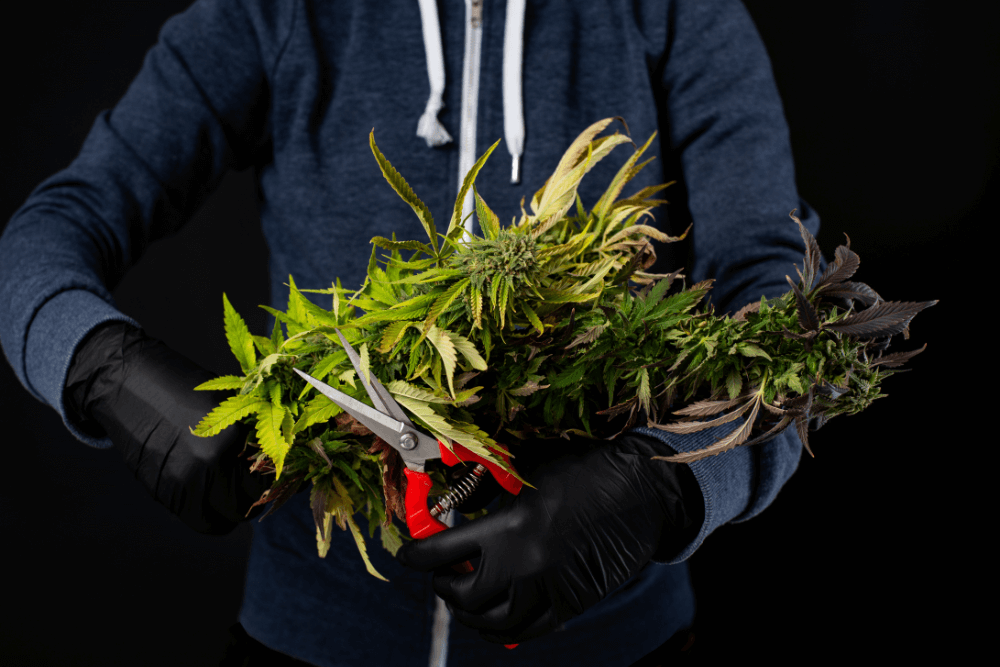
As we enter the Fall cannabis harvest season of 2023, several dynamics impacting human resources in the cannabis industry have shifted considerably. Between escalating labor costs and the imperatives of ensuring safer working conditions, the landscape for cannabis industry employers isn’t what it used to be.
Here are three recommendations to help you navigate workflows this harvest season:
1. Proactive Planning Amidst Rising Labor Costs:
Labor costs in the cannabis industry have seen a sharp surge in recent months. Where we saw hourly rates for harvest workers in years past at $12-$20/hour, this range is now closer to $14-$25/hour, depending on the market. This uptick isn’t just a reflection of rising expectations among industry employers, but also a clearer sense of the safety risks involved, what experienced cannabis harvest workers are willing to work for, and the number of such workers who have left the industry entirely in recent months. For cannabis companies, this necessitates early planning. Human resources departments need to remain agile to adapt to these changes in the labor market.
To address this, a multi-pronged strategy is best. If you’re still finalizing your harvest approach, consider a blend of hiring seasonal talent while also investing in some automation. By leveraging the unique strengths of both seasonal and full-time workers, along with automation, you can tap into hands-on expertise, while enjoying the benefits of flexibility and cost-effectiveness.
2. Prioritizing Worker Safety:
The increasing global temperatures, a distressing trend for many cultivators, has implications for outdoor and greenhouse workers. HR professionals need to be proactive in revising Safety protocols to protect workers from the adverse effects of heat. Regular breaks, shaded areas, hydration stations, and training on recognizing heat-related illnesses are no longer optional. In certain areas, you may want to consider having your crew come in earlier than usual, before the weather heats up, as long as you have adequate lighting in place so the team can work safely.
If you operate in remote locations or places farther from urban centers, it becomes even more crucial to ensure nearby amenities and facilities are optimized for the warmer climate. This includes considering air-conditioned accommodations, cool showers, or providing cooling stations on-site. Keep a list of essential nearby services, and ensure they cater to the needs of workers battling higher temperatures.
In light of respiratory concerns, especially in indoor processing settings, invest in premium Personal Protective Equipment (PPE) for tasks like handling kief, resin, and pre-rolls. This PPE can also be used by workers outdoors when there are some air quality concerns due to fire season. It is not safe for workers to be out when air quality is poor. Check with your Worker’s Compensation provider to see what the threshold is for your policy.
If you’re looking for Work Site Safety or OSHA guidance, please reach out to NCIA’s HR Committee for recommendations.
3. Integrating Automation with the Human Touch:
2023 is undeniably a pivotal year for integrating automation in the harvest process. Advancements in technology offer tools that can help streamline multiple stages of the harvest. While there are certain upfront costs involved, there are also long-term benefits to be had in terms of overall profitability and efficiency. While much of the available machinery has a way to go before being as accurate as an experienced Harvesting Tech or Trimmer, especially for growers in remote areas, where there isn’t a large pool of talent, leaning more on automation could make the difference between harvesting your cannabis at its peak, or not.
You can also look to our related NCIA blog post from 2021 for additional suggestions to help you prepare for the Fall harvest. Navigating the harvest this season will require forward-thinking, investment in a combination of seasonal workers and technology, along with a renewed commitment to worker well-being. As challenges continue to mount in our industry, the companies that adapt and prioritize both efficiency and worker safety will undoubtedly reap the greatest rewards.
Member Blog: Adult-Use Cannabis Now Legal in Maryland – A Look at the New Law

In the heart of the East Coast, Maryland stands as a state rich in history and diversity. But now, it’s making headlines for quite a different reason.
In a significant move, the state has crossed one of the biggest milestones of its legislative journey- adult-use cannabis is now officially legal.
Of course, the decision comes after much debate, consideration, and reflection on the impact this will have on society. However, this law is sure to change the way cannabis is viewed, controlled, and used within the state.
The following article explores the details of this landmark law, what it means for Maryland’s future, and how customers can get their hands on adult-use cannabis.
Let’s cut to the chase!
The New Cannabis Law In Maryland: Explained
The journey of legalizing cannabis for adult-use began in the 2022 General Election. During these elections, voters gave a nod in favor of allowing adults aged 21 and older to use cannabis. This came into effect on July 1, 2023.
But what did this mean for the state?
Well, during the 2023 legislative session, lawmakers got to work. They passed a law called House Bill 556/Senate 516, describing the rules for legal sales of cannabis, including how to license sellers and how to tax them.
This change was sealed when the Cannabis Reform Act got the Governor’s signature on May 3, 2023. This Act was like a green signal for licensed shops to sell both medical and adult-use sales. So, by July 1, there was an official marketplace for adult-use cannabis.
But that’s not all! The Act gave more powers to the Maryland Cannabis Administration. They were tasked with issuing more licenses to those growing, processing, and selling cannabis. There was also something new – the incubator licenses. All these licenses were set to be released in two phases.
Highlights of The New Law:
- Adults aged 21 and over can legally possess, consume, and grow marijuana for personal use.
- The legal limit to possess cannabis is:
- Up to 1.5 ounces of flower
- Up to 12 grams of concentrated cannabis
- The product contains up to 750 milligrams of delta-9-THC.
- Public consumption remains illegal.
- Driving under the influence of marijuana is still a criminal offense.
- Expungement of certain marijuana-related convictions, giving thousands of individuals a fresh start.
- Under federal law, cannabis is still prohibited; that’s why transporting or carrying it across state borders is not allowed.
|
How Can Someone Buy Cannabis Products For Adult-Use?
Purchasing cannabis products for “non-medical” use is pretty easy now. If you or someone you know wish to get their hands on these products, follow this simple guide:
- You need to be 21 years old or older. That’s the legal age for buying cannabis products for adult-use in Maryland. Remember to carry a valid photo ID to confirm your age when visiting a dispensary.
- Dispensaries or stores have a variety of options to choose from. So, whether you’re interested in edibles, flowers, tinctures, or topicals, it’s essential to check them out to find the product that suits your preferences. You can even ask questions to make a well-informed decision.
- Though you don’t require a medical card to buy cannabis, you do have to keep the maximum limit of possession in mind and follow all the state regulations. It will help avoid potential penalties or legal troubles at the federal level.
That’s all! Now, you can enjoy the benefits of this popular herb from the comfort of your home.
What Would Be The Implications Of This Law in Maryland?
Well, just like any law amendment and law regulation, this milestone has also brought along a few implications that include:
Economic Implication
The legalization of adult-use cannabis in Maryland is set to have significant economic implications. Tax revenues from cannabis sales are estimated to bolster state funds, allowing for investment in various public services like education, healthcare, and infrastructure.
The growth of the cannabis industry will likely create new jobs, supporting the local economy and providing opportunities for entrepreneurs and workers alike. Proper regulation can further ensure that the economic benefits are widespread and sustainable.
Social Implications
The state has taken a significant step, and this is because people’s feelings and opinions about cannabis are changing. This is reducing the age-old stigma related to its consumption and other uses.
In addition to this, the new law allows for expungement of prior convictions related to its possession and use. This is a step for righting past wrongs, positively impacting countless lives, and offering them a second chance to build their lives.
Educational Initiatives
Education is one of the key components of Maryland’s approach to cannabis legalization. Basically, the plan is to implement public education campaigns aimed at informing residents about responsible use, potential health risks, and legal boundaries.
These educational initiatives are vital for ensuring that people, especially young ones, understand the new law’s nuances and potential health implications. Such awareness is crucial in preventing misuse and fostering a responsible approach to adult-use cannabis.
Moreover, this will make regulation of the law much easier, transparent, and responsible. In fact, law enforcement agencies have also provided clear guidelines on the legal use of cannabis, emphasizing the continued illegality of driving under the influence, underage possession, and other related offenses.
Key Takeaways: A Historical Moment for Maryland
The decision to legalize adult-use cannabis in Maryland isn’t a minor tweak in legislation. It’s a significant moment, marking the state’s progressive stance in acknowledging changing societal views and personal freedoms.
In fact, it’s about dollars and cents too. With regulated sales and businesses springing up, the state stands to gain from additional tax revenue and job creation. The state has shown foresight. The legalization comes with robust educational initiatives and strict safety regulations.
From ensuring quality control of products to launching public education campaigns, the state is determined to prevent misuse and ensure responsible consumption. Ultimately, it’s a multifaceted approach shaped by careful deliberation, public interest, and a vision for a better future.
Member Blog: How to Avoid the 4 Most Common Payroll Mistakes

To achieve your goals in business, your payroll system must be flawless. It is an aspect in which you must strive for perfection whenever possible. Avoiding payroll mistakes in the cannabis industry is especially crucial due to the highly regulated nature of the industry. Compliance with payroll regulations is essential to avoid legal repercussions and penalties from governing agencies. Additionally, accurate and timely payroll ensures proper compensation for employees, and maintaining precise payroll records promotes transparency and accountability, building trust with employees and stakeholders in an industry where transparency is vital.
It is better to be safe by managing your payroll as thoroughly as possible, if not you would be sorry you didn’t. Most people have most likely made these mistakes and have had minor consequences accompanying them. If these mistakes persist, the business owner often pays dearly for them. These common payroll mistakes have cost some their business.
Having Multiple Records for a Certain Payroll
It pays to have all your payroll information in a single database. This enhances security and ensures that you know where to look for your payroll information. If this has been your practice and your business uses tools like HCM software that helps you manage your employees and other business information, then this shouldn’t be much of a problem.
All you’ll have to do is use that same software to manage and process payroll information. If your business documents are disorganized, be sure to have them all in one place.
Not Updating Needed Information
Ensure that you are not complacent by relying on automated software to do everything. The system is not aware that your employee would be changing addresses therefore such info should be entered manually.
That error could lead to mistakes in filling that employee’s taxes as the bills might arrive at the wrong address. As much as simplifying a process is great, you still need to play your path in getting things done.
It would help you to set timely reminders in the system that should help you avoid the mistake of not keeping up with the latest information.
Weak Security System
Confidential information should remain so. To avoid your system being compromised, you should be using a payroll processing system with strong cybersecurity.
This has got to be the costliest mistake common to payroll processing. Every information concerning your business that is not available on your website and to your customers, is most likely not public information. Private information about your business should remain private.
Information in payroll systems is as sensitive as can be. There’s almost every piece of information you need to know about a person, and as such strict rules should apply to keeping them safe. A weak security measure means a weak business and a weak business means trouble.
Inaccurate or Delayed Tax Payments
In calculating taxes absolute precaution is required. If you are not a tax accountant you are probably not so proficient in this calculation. Your tax accountant (if your business has one) should learn how to adequately use the system to avoid delay or inaccuracy.
Bear in mind that inaccurate tax payment makes your business a tax defaulter. Your business as a taxpayer has the duty of tax calculations assigned to an accountant. Note that taxes ought to be paid within the required time bracket. The systems are programmed to make the tax payments when due.
The human capital management system does not only process payroll information but can also tell when employees qualify for federal or state tax credits.
In Conclusion
To maintain payroll accuracy and timeliness in the cannabis industry, it is crucial to avoid payroll mistakes. By opting for a third-party payroll provider like Tesseon you can benefit from our expertise and ensure that your payroll is consistently accurate and delivered on time, regardless of any industry-specific challenges. The Cannabis industry is both very young and extremely regulated, it is imperative that businesses stay vigilant and proactive to avoid costly mistakes.
Member Blog: The SAFE Banking Act Is Delayed. Again.

Here’s what cannabis businesses can do to make the most out of the current financial landscape.
Companies in the cannabis industry looking to start a relationship with federal banks and credit cards are going to have to wait a little longer. Despite bipartisan support, the Secure and Fair Enforcement (SAFE) Banking Act has stalled in the Senate; caught in minor disagreements, it has missed the opportunity for a vote during the summer session, leaving cannabis-related companies caught in financial limbo. Unfortunately, this isn’t new news: the first version of this bill was introduced to congress 10 years ago.
Politically, the main selling point is that the bill would boost the safety of the cash-heavy industry: Politicians point to an increased number of break-ins at dispensaries as a justification for allowing federal financial institutions to provide services such as bank accounts and credit card transactions to cannabis companies.
An easy political sell, the public safety angle – spelled out in the acronym SAFE – is usually the first (and only) benefit mentioned in the news. Yes, SAFE would allow dispensaries to shift away from cash transactions by permitting credit card companies to service businesses that produce, manufacture, distribute and sell cannabis, despite the fact it is a schedule 1 controlled substance.
But beyond preventing robberies, the bill would start to level the economic playing field for this growing industry that already faces an extremely high rate of federal taxation, on top of other disadvantages, such as higher transaction and banking costs that lead to pricing pressure – and make it tougher to compete with the illicit market.
Because of cannabis’ schedule 1 status, nationwide banks are not allowed to provide any services whatsoever to cannabis-related businesses. Even though the businesses are legal at the state level, national banks operate under a federal charter that prohibits such relationships – not just with dispensaries, anyone who does business with the cannabis industry – web designers, lawyers, marketers, etc.
(I learned that the hard way when, in the early days of working as a virtual CFO for cannabis companies, I had all of my Bank of America accounts – personal and business – frozen and shut down abruptly.)
Since federal banks cannot provide small business loans or even issue checking or savings accounts, cannabis-related businesses are limited to small banks (i.e. credit unions, state banks). They face higher borrowing costs, and receive lower interest rates, cutting them off from many of the privileges other industries enjoy. Best financial practices – like securing a line of credit or keeping operating cash in an interest-bearing account – may seem out of reach.
For cannabis-related companies that had been impatient to take advantage of this new legislation, the news is frustrating to say the least.
But there are lots of ways retailers can work within the current financial landscape. Here’s what I recommend.
- Seek an interest-bearing account – The smaller banks and credit unions servicing the cannabis industry typically do not offer these clients interest-bearing products. However, it is possible to find interest-bearing accounts for operating cash, for example through the fintech company Safe Harbor Financial, with rates starting around 1.5%.
- Secure a line of credit – With loans hard to come by, cannabis companies often feel as though they have to access capital from private investors, forcing them to give up equity. But seeking non-dilutive funding is possible – and recommended – once you’ve established your target operating cash balance of 10-30% of annual revenue.
Many cannabis friendly banks will offer unsecured lines of credit at rates of base rate +4% – but generally only in limited license states.
Note: although rates can be competitive in some cases, the amounts tend to be lower. However, since these facilities are often based on an amount per tax ID, multiple entities could each carry their own line of credit and increase total borrowing capacity.
- Facilitate compliant debit sales – We know cash-only can drive down retail sales and increase risk of theft or employee mismanagement. With credit cards unavailable, two popular, but non-compliant, solutions have been cashless ATMs and Mastercard and Visa debit cards. While cashless ATMs experienced a crackdown last December, the latest news suggests that Mastercard is also cutting off this popular work-around.
Rather than get caught up in the headlines, adopt compliant pin-based debit cards, through products such as Aeropay. Unlike traditional debit card transactions, customers will have a fee, and they’ll also have to set up a specific app to gain access, but as all other cashless options appear to be erased, the benefits outweigh the costs, especially for regulars.
Just make sure you’ve got a point of sale (POS) system with flexibility in terms of their API (application programming interface) – for example Flowhub – so that you can integrate the pin-based debit card payment method.
- Don’t pay monthly banking fees – While most banking institutions charge account fees to cannabis businesses, with a little research you can find some that waive those fees, for example Main Street Bank and Safe Harbor Financial.
- Keep deposits safe – Although the dust has settled since the collapse of Silicon Valley Bank, cannabis businesses should still keep an eye on managing their banking risk. Since programs like CDARS and ICS are not available to the industry, we recommend cannabis operators keep deposits at multiple banks to keep the highest possible FDIC insured balance.
Despite these financial obstacles and policy roadblocks, the cannabis industry continues to grow, year after year. Accessible banking products are out there – and as we wait for more federal legislative progress, it can be well worth the investment to do a little research to find out which ones best meet your businesses’ needs.
Member Blog: 5 Types of Business Insurance You Should Consider

As the cannabis industry continues to rapidly expand and evolve, entrepreneurs need to be proactive in safeguarding their businesses from potential risks. Insurance is crucial for any business, and the cannabis sector is no exception. In this article, we will explore five important types of business insurance specifically tailored to the needs of cannabis entrepreneurs. By understanding these essential policies, cannabis industry professionals can make informed decisions to protect their investments and future-proof their ventures.
General Liability Insurance
General liability insurance covers the cost of any injury or damage caused by your business. This includes injuries on your premises and injuries to someone while using your products or services. It also covers you if someone is injured while on your property, even if they’re not part of an organized event or program (like a birthday party). General liability insurance will also cover the cost of any lawsuits filed against you for negligence or breach of contract arising out of the above scenarios.
Professional Liability Insurance (Also Known As Errors And Omissions)
Professional liability insurance, also known as errors and omissions insurance, protects you from lawsuits if a client feels you have made an error in your work. This can be anything from a client claiming that you didn’t perform according to the contract terms or did not fulfill their expectations.
This coverage differs from general liability protection in that it only covers claims against professional services like accounting or legal services. If you own a business where your products or services could physically injure customers, you also need general liability coverage (more on this later).
The good news is that most businesses need both types of policies: professional liability for the expertise required for running their business and general liability for protecting themselves against bodily injury incurred by customers using their products/services.
Business Interruption Insurance
A business interruption policy provides coverage for losses that result from the sudden, unforeseen loss of use or operation of your business. For example, if you’re forced to close your doors because a fire destroyed your building, this policy will pay back some of the revenue you lost during that period. Business interruption insurance can be purchased as part of a multi-line or a stand-alone policy.
Workers’ Compensation
The next type of insurance to consider is workers’ compensation insurance. This form of insurance covers the cost of medical expenses and lost wages for an employee who has been injured on the job. In all states, workers’ compensation policies are required by law, but you may want to add additional coverage for your business if there is a high risk of injury among your employees. Your premiums will be higher if you have a larger number of workers or more dangerous jobs than others in your area, so it makes sense to review this kind of coverage before purchasing it.
Employment Practices Liability (EPL) Insurance
Employment Practices Liability (EPL) insurance can be a lifesaver for small businesses, especially when there are multiple employees.
EPL insurance protects your business from sexual harassment, discrimination, and wrongful termination claims. It also provides coverage for defending these types of claims against you.
If you’re doing business in certain industries, EPL policies are often required by law or rely on government contracts to run your business. A few examples include healthcare providers, educational institutions, restaurants, and hotels—though it varies by state, so check with your insurance agent before purchasing a policy.
Conclusion
The bottom line is that you should consider your business insurance needs carefully and ensure adequate coverage. If you’re unsure about what type of insurance to get or how much coverage is enough for your business, please speak with an agent or broker who can help guide you through these decisions.
Committee Blog: Banking in the Cannabis World

By: Shawn Kruger, Avivatech
Contributing Authors: Paul Dunford, Green Check Verified | Todd Glider, MobiusPay Inc. | Kameron Richards, Kameron Richards Esq.
Produced by: NCIA’s Banking & Financial Services Committee
The Landscape
With recreational marijuana legalized in 23 states, Washington D.C. and Guam, the public continues to broadly favor legalization for medical and recreational purposes. Why then, is it still a challenge for the cannabis industry to access financial services? The short answer: cannabis banking is risky for financial institutions (FIs), and bankers are committed to avoiding unnecessary risk. Historically, FIs have worked to keep funds associated with illegal activity out of their banks and credit unions, so FIs are sensitive to conflicting state and federal cannabis laws. For example, many FIs are regulated by federal agencies, but marijuana is a Schedule I controlled substance.
Navigating the Challenges
However, there are many banks and credit unions that have taken this risk for a variety of reasons, including creating new sources of income, a desire to serve the unbanked in their communities, and supporting the social equity initiatives in the cannabis industry. These FIs are usually discreet about their cannabis banking programs, and it’s often hard to identify them through your typical approach: prowling websites, Google searches or even trade shows (although this has improved over the past 12 to 18 months).
Fortunately, the best approach is also a well-trusted option: word of mouth. Contact lawyers, accountants and bookkeepers in your area. If they represent or work with other local marijuana related businesses (MRBs), they may know who they are banking with or know someone who does. You should also consider contacting the FIs directly, even if you don’t know if they are working with MRBs. You might be surprised to find that they do, and if they don’t, they might redirect you to another FI in the area. Finally, organizations like the PBC Conference team, provide resources to aid your search, including a Cannabis Banking Directory published annually.
Focus your search on credit unions, community banks, and regional banks. We are entering a new phase of cannabis banking with some FIs offering more than just a place to park your cash. A growing number now offer loans, payroll services, business insurance, etc., so take time to see what’s available, compare multiple FIs’ programs, and find the best match for your cannabis-related business’ (CRB) needs.
Be Prepared
Every action taken by an FI, regardless of their location or asset size, is closely scrutinized by state and federal banking regulators, and law enforcement agencies. They want to make sure that banks and credit unions are only working with legitimate and legal state CRBs. Therefore, you can expect an FI to require a combination of the following:
- Driver’s license or other acceptable state-issued identification for all account holders
- Information on all beneficial owners of the company, not just those who own a percentage of the company above a certain percentage threshold (such as 20%)
- Tax returns for the previous year for both the company and the beneficial owners
- Financial information such as profit and loss accounts and capitalization tables
- A copy of any required state licenses
- Operational data such as projected annual sales and number of patients/customers
- Corporate formation documents such as articles of incorporation and business plans
- Sales transaction data (store reports or invoices) for the past thirty days
Behind the scenes of cannabis banking, FIs must do a lot to ensure that they are onboarding only legitimate CRBs; from collecting and analyzing market transactions to conducting reporting. This means that FIs often have additional staff to fulfill their compliance duties and they invest in software to automate some of their monitoring. FIs invest heavily in banking cannabis and account fees help offset those expenses. This means you can expect to pay account setup fees and monthly account maintenance fees to help cover these costs. Prices have come down in recent years. The days of paying $5,000 per month for an easy deposit account are long gone, but the fees will remain high as long as a lot of oversight and reporting falls on FIs.
Embrace the Journey
FIs are far savvier about detecting MRB activity among their existing customer/member accounts. At this point, it’s not a question of “if” your FI will find out you’re an MRB, but when. Few things are more disruptive to a business than getting a letter from your FI informing you that your account will be closed in thirty days. Don’t put yourself in that position. Additionally, you may be missing out on vital financial and business services by staying “under the radar” and not having a transparent relationship with a bank or credit union. Start looking for a cannabis-friendly bank or credit union today!
Committee Blog: Exploring Anti-Counterfeiting Packaging Solutions

The cannabis industry has seen success and achievement in recent years. However, with this success comes a challenge: counterfeiting. Counterfeit cannabis products pose serious risks to consumers and can damage the reputation of legitimate businesses. To preserve authenticity and protect consumer safety, solid anti-counterfeiting measures can be implemented. One crucial aspect of anti-counterfeiting efforts is using packaging solutions that are both secure and reliable. Let’s take a closer look at the types of counterfeiting and the packaging options available to protect brands and consumers.
What is Counterfeiting?
There are two main types of counterfeiting that we’ll focus on:
Packaging Impersonation: Occurs when fraudsters recreate the packaging of popular and trusted brands. The aim is to deceive consumers into believing they are purchasing authentic products from a brand. Counterfeit packaging can closely mimic the design, colors, and labeling of genuine products, making it difficult for consumers to differentiate between authentic and counterfeit items. This poses a risk to a brand’s reputation if counterfeit products are being sold under their name because these fake products usually do not meet a brand’s standards for safety and quality.
Product Tampering: Product tampering involves attempts to alter, manipulate, contaminate, or compromise cannabis products. This poses significant health and safety risks to consumers, especially if harmful contaminants are introduced or if the potency of the product is affected.
Anti-Counterfeiting Options
To combat packaging impersonation, there are a myriad of solutions available. Most solutions aim at making packaging replication difficult. Using holograms on packaging is one option that will increase the difficulty fraudsters will face when trying to duplicate packaging accurately. Holograms can also incorporate additional security features like microtext and unique serial numbers. This further increases the complexity and uniqueness of the package. The complexity, specialized equipment, and materials required to create convincing holograms may deter counterfeiters from even trying to replicate that specific package, as it increases the cost.
Additionally, color changing inks, specifically tamper-indicating inks, can provide a visible indication of tampering. If someone attempts to move or reposition a label, the tamper-indicating ink is triggered and will display a different color indicating that the product may not be valid. Another type of color changing ink technology is photochromic inks. This color changing ink technology can act as an invisible layer of protection. They are only visible under specific lighting conditions and fraudsters may miss adding these to counterfeit packaging. Lastly, digital watermarking is a great option to combat packaging impersonation. These are not visible to the naked eye, but are embedded within your packaging design, for example in your logo. When these watermarks are scanned with specialized software, devices or cell phones, it can allow for verification of authenticity. Not only do digital watermarks help with authenticity, but can add customer interaction as well. When a customer scans the watermark with their smartphone, they can be taken to the brand’s website, a special landing page, and more. To take the level of protection even further, with digital printing it is possible to put a different code in each package which creates unique IDs for one product. These watermarks can even contain important information such as batch numbers, production dates, and more to enable product tracing.
To combat product tampering, a simple solution is using tamper evident bands on containers. Tamper-evident bands fit snugly around the closure of a container and are applied when the product is sealed. The only way the product can be opened is if the band is removed. Tamper evident bands provide visual evidence of tampering to the consumers and also help prevent the container from being refilled and sold. Similarly, tear notches on flexible packaging provide the same benefit that temper bands do. These are small indentations or perforated areas on flexible packaging that provide a visual indicator to consumers if a product has been opened. Both tamper bands and tear notches instill confidence in consumers by ensuring that the product meets brand’s standards for quality and safety. Lastly, using a tamper-evident seal which incorporates color-changing inks to indicate unauthorized access to a package. When the seal is intact, it will remain the original color, however if someone attempts to peel off or break the seal, the ink changes color providing evidence of potential tampering. This technology helps to safeguard products during storage, transportation, and distribution, providing assurance to consumers and protecting against counterfeit or tampered goods.
Best Practices and Conclusion
In addition to implementing the anti-counterfeiting options above, brands in the cannabis industry should consider adjusting their labels and packaging designs to increase the difficulty for replication. Furthermore, educating consumers about the key elements to observe on a brand’s package or label can enable them to detect subtle indications of tampering. By protecting both the packaging and the product, the cannabis industry can preserve its reputation and ensure the success of legitimate businesses.
Member Blog: Safeguarding Cannabis Businesses – Managing Product Liability and Ensuring Consumer Safety
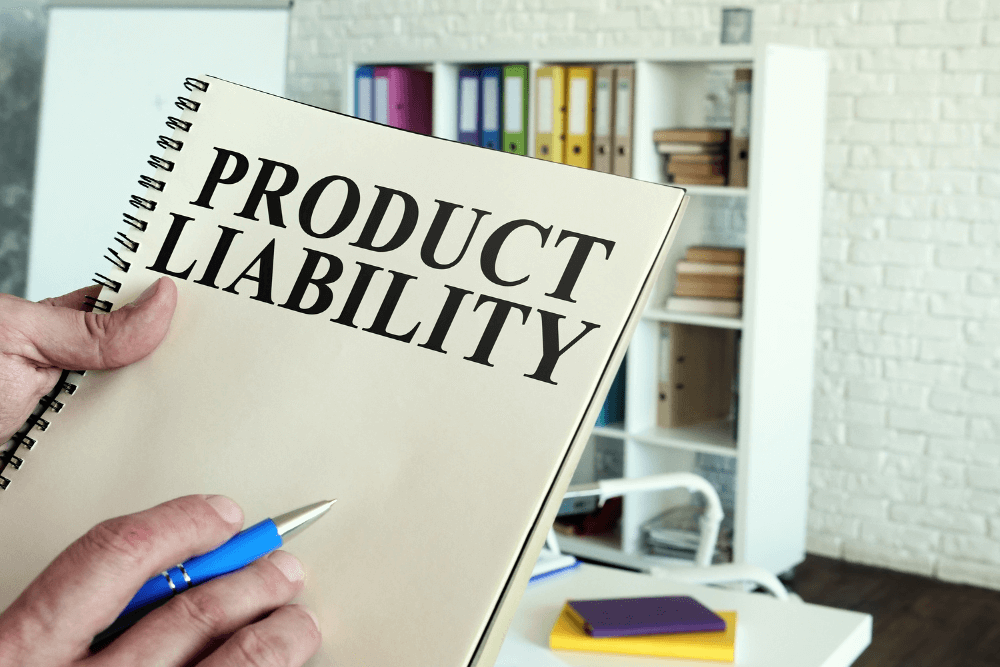
The rapidly expanding cannabis industry presents unique challenges when it comes to managing product liability. As the sector continues to grow, businesses must prioritize quality control, labeling requirements, and consumer safety to protect their reputation and financial well-being. In this article, I will explore the various risks associated with product liability in the cannabis industry and discuss risk transfer strategies to safeguard businesses from claims related to cannabis products. One of the largest misconceptions I hear is that if a client is not making the product, they do not need product liability. Unfortunately, the reality in the industry is that in a product allegation, everyone through the entire supply chain could be named in a suit.
Quality Control and Labeling Requirements:
One of the key challenges in the cannabis industry is maintaining consistent product quality and ensuring accurate labeling. Product liability claims can arise if a consumer experiences adverse effects due to contaminated or mislabeled products. To mitigate these risks, cannabis businesses must implement robust quality control measures specific to what part of the supply chain.
From cultivation to manufacturing and distribution, every stakeholder should prioritize quality assurance practices. This includes regular testing for potency, contaminants, and pesticides. By adhering to rigorous standards, businesses can minimize the chances of their products causing harm to consumers and reduce the likelihood of product liability claims.
Accurate and compliant labeling plays a critical role in managing product liability risks. It’s vital for cannabis businesses to stay informed about the specific labeling requirements in their market, as laws and regulations vary across jurisdictions. Take California, for instance, where non-manufactured products have their own set of requirements, distinct from those for manufactured products. Whether it’s raw flower or gummies, each product category has its own labeling specifications.
Sadly, there have been instances where products were packaged to attract children or imitate popular snack brands. These cases highlight the deceptive packaging that misleads consumers and targets underage individuals. By ensuring proper labeling, businesses can offer transparency to consumers, building trust in their brand. Furthermore, accurate labeling of THC content is crucial to avoid potential product liability and advertising claims. By providing clear and precise information about THC levels, businesses can protect themselves while also meeting consumer expectations.
Consumer Safety and Education:
Cannabis businesses must prioritize consumer safety by providing clear instructions for product usage and appropriate warnings, especially for edibles and other products with specific dosage instructions. Consumers should be informed about potential risks, possible side effects, and any known allergens present in the product. Accessible information to consumers can help reduce the likelihood of product misuse and associated liability claims.
Insurance Strategies for Product Liability:
Product liability insurance is a critical component of risk management for cannabis businesses. The cost of insurance premiums is typically based on gross sales, meaning that the more products a company sells, the higher the associated risk. However, it is important to note that not all insurance policies cover product liability in the cannabis industry. Therefore, businesses should work with specialized brokers who understand the unique risks and challenges in this sector.
In addition to product liability insurance, implementing further risk transfer processes can play a significant role in reducing the likelihood of being involved in a lawsuit. Businesses should establish clear contracts and agreements between cultivators, manufacturers, and distributors, outlining each party’s responsibilities and liabilities. These agreements help allocate risks appropriately and provide a legal framework for dispute resolution.
Overall, managing product liability in the cannabis industry requires a proactive and comprehensive approach. By prioritizing quality control, adhering to labeling requirements, and ensuring consumer safety, businesses can minimize the risks associated with all aspects of the supply chain when it comes to product liability. Additionally, securing appropriate insurance coverage and implementing additional risk transfer processes can provide further protection and peace of mind. As the industry evolves, staying informed and proactive in risk management will be key to long-term success and sustainability in the cannabis market.
For more information, please reach out to Valerie Taylor, Vice President, Liberty Company Insurance Brokers.
Committee Blog: The Best Way to Do the Worst Thing – Quick Tips for Demonstrating Empathy in Layoffs

Layoffs are unpleasant for all involved. Not only is it painful for a supervisor to part ways with someone they have hired and trained to be a productive part of the team, but jarring as an employee to suddenly learn that you are unemployed. Although there is no scenario where a layoff is a positive experience, here are some helpful ways to ensure you approach it with empathy and humanity.
Yes, we know it is business, but it is also personal (especially to the employee being laid off).
Think about each person individually and how to make the situation as comfortable as possible. If they work remotely generally, or have a significant commute, consider a virtual meeting. While in-person has generally always been perceived as better, in today’s flexible work environment some employees might be upset about being asked to come into the office, just to be terminated and then drive back home. Think about the physical location you have the conversation (if in-person), as you do not want to put the person in a position to walk past their peers on their way out and offer to ship their personal things to avoid the public packing of the box. Cater your choices to the person being impacted.
If possible, have HR present and give the employee time with HR after the supervisor delivers the news so the employee can ask specific questions about next steps that they may not feel comfortable asking while on the phone with their now previous supervisor. If your company doesn’t have a HR department, consider contracting with someone who can support you if the layoffs impact more than a few people.
Does your benefit plan run until the end of the month after termination? If so, consider planning the separation date toward the beginning of the month so the employee has access to benefits through the rest of the month. Not every company is in the position to provide lucrative separation packages. However, providing a week or two of remote transition time in addition to the severance paid, provides a better transition for the company and also gives the impacted employee more time to job search.
Start the conversation off with letting the person know the discussion will be a difficult one, as this will provide them the opportunity to prepare for the bad news. It can feel disingenuous to have dialogue about work projects, sports, or the weather, and then get into the topic at hand. It is ok to tell an employee who did a great job and contributed a lot, that you appreciate their contributions and that the layoff is not due to their performance. This can matter when they are later reflecting on what transpired.
The communication shouldn’t end after the termination conversation.
Anticipate that it is difficult to process the news that you’ve lost your job and retain what you’ve heard about next steps. Commit to immediately providing the details over email after the discussion so that they can review them whenever they are ready.
Have a separation package prepared that contains all the important information someone might need post-separation. They will want to know about accessing their W2, rolling over their 401k, how long their benefits are active until, how to use their Health Savings Account funds, how to access your HR or payroll system for pay stubs, etc.
Layoffs impact more than those who left.
Make it safe for employees to reach out to those impacted and offer their support and care. When informing stakeholders of the changes, let them know that you wish their colleague well and encourage anyone that wants to reach out, the opportunity to reach out and offer support.
Promises of safety usually cannot be made during times of uncertainty. Often employees will ask “Is that it? Are we done?” These are tough questions in times of uncertainty and caution should be taken when answering them. The worst thing would be to say that there will be no more layoffs, and then someone else gets laid off or terminated. Even if the termination was performance related, it can impact the credibility of leadership if employees feel like the promise was broken.
Encourage leaders to have personal conversations with their team members about how they are feeling. When you are feeling uncertain, you want to hear from the person you trust most. Of course, this needs to come with guidance and support from senior leaders. Senior leaders should role model this, and then their leaders should pay it forward. Tell your most critical players that their role and contributions are important to the organization. If appropriate, explain why the decision was made to reduce or eliminate certain groups so employees can understand the rationale and decide whether that provides them comfort in their position.
Generally, position reductions result in the remaining employees picking up additional tasks. Handle this with care. Have conversations with employees about their workload and include them in the process of solutioning how to cover the tasks.
Unfortunately, “what not to do” lessons are generally learned the hard way when it comes to layoffs, however, through research and reading employee feedback, you can learn a lot from others’ mistakes. If you lead and plan your layoffs with empathy and compassion, you are more likely to avoid major pitfalls.
Member Blog: The Evolution of Cannabis-Friendly Banks and Credit Unions
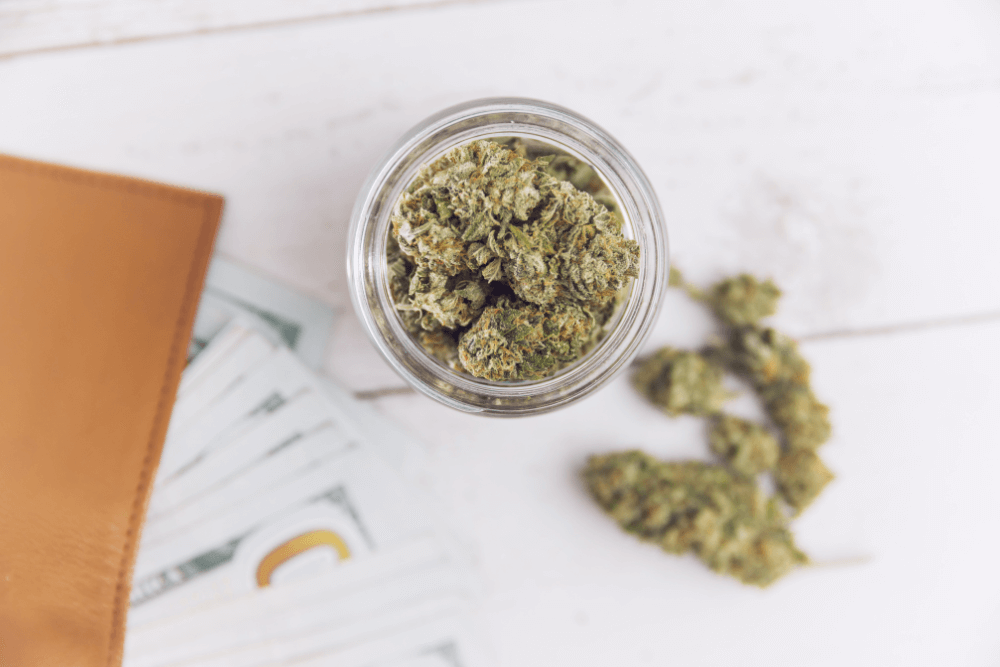
If you are a cannabis-related business (CRB) looking for banking services, that search is becoming less demanding. With the U.S. cannabis market expected to exceed $70 billion by 2030, financial institutions are increasingly becoming aware of the opportunity to boost their bottom lines, while supporting the safety and economic development of their local communities. As friendlier cannabis banking legislation emerges from Washington, D.C., we expect to see thousands of financial institutions actively serving the industry, up from the approximately 250 banks and credit unions serving the industry today.
Early on, smaller credit unions were among the most prevalent pioneers in the industry. Even today, most banks and credit unions that are cannabis-friendly are less than $1 billion in size. That trend is changing rapidly, though, and with it, an increased level of sophistication is supporting the cannabis ecosystem. In fact, at least two banks with assets larger than $50 billion on the East and West Coast respectively have entered the market and by all accounts, have booming portfolios.
When looking for a banking partner, CRBs should consider a few key questions:
- Does the bank or credit union have an existing cannabis portfolio?
- What are the fees for service?
- Can the financial institution provide ACH services for business-to-business transactions?
- How does it handle cash deposits?
Deposit taking is the primary focus of cannabis-friendly financial institutions however there is activity in a few key areas relevant to the industry.
Lending
Fast-growing industries like cannabis are always in need of growth capital, and the banking sector has been slow to fill this void. The exception to this is in mature markets (such as Oregon, Colorado, and Massachusetts) where banks and credit unions in search of low-cost deposits are increasingly offering lending to attract legal cannabis operators to their institutions. While interest rates are still higher than typical business loans and generally require personal guarantees, the advent of cannabis lending is a welcomed relief to founders and others who have historically had to part with equity to meet capital needs.
Fortunately, lending is increasingly becoming mainstream. By our estimates, 50 or so banks and credit unions have opened their wallets in this regard, with most of the lending activity tied to commercial real estate. Equipment financing has also become more prevalent, and operating lines of credit are extended rarely to those firms with deep operational experience and more substantial balance sheets.
Payments
Until federal legalization occurs, the payments space will continue to include workarounds created by fintech entrepreneurs and others. ACH wallets tied to loyalty programs are often seen in medical markets, and until the end of 2022, cashless ATMs had widespread adoption on the adult-use side.
Most recently, PIN-based debit solutions running on the regional debit rails are gaining traction, and these options pass compliance hurdles that were not present with cashless ATMs. With their advent, merchants are also seeing an increase in sales of 20% or so as compared to cash-only environments.
Access to banking and financial services in the cannabis industry has come a long way in the last decade yet has a long way to go. There is a real advantage for early movers to provide services and we expect more and more financial institutions to recognize the opportunity and get involved.
Member Blog: Move Over Cannabis ERP – This is How You Breakdown Information Silos

As a licensed cannabis company, managing multiple data sources, systems, and processes that must remain in sync and compliant 24/7 comes with challenges not faced by traditional businesses.
Like every other business, however, you rely on a variety of software systems like inventory management, sales tracking, customer relationship management, financial systems, and more. And when these systems don’t communicate well, several issues you’re probably familiar with rise to the surface.
Maybe you’ve had to manually input data from one system into another or get custom code to get different systems to communicate, but these are time-consuming, error-prone, and inefficient. Let’s take a quick look at some of the other problems you’re likely to run into.
Data Inconsistencies: When systems don’t share information, it creates ‘data silos’ with discrepancies occurring everywhere. For example, your inventory system shows you’re out of a particular cannabis product, but a sales system shows overstock and offers the product at a steep discount. These inconsistencies lead to confusion, inefficiencies and lost profits.
Reduced Productivity: Employees manually entering and transferring data between systems is time-consuming and prone to error– the extra effort kills productivity. Don’t forget, staff need to fix those manually input errors manually when they could be working on more important things.
Poor Decision-Making: Blindspots can seriously impact decision-making without a unified view of your business data. If sales data is kept separate from inventory data, as in the example above, making accurate forecasts and planning for future needs is next to impossible.
Customer Dissatisfaction: Customer data should be shared between systems to maintain customer service. A customer could unknowingly purchase a back-ordered product or receive discount promotions for products they’ve already purchased, or the customer service team might need access to a customer’s full history when dealing with inquiries or complaints. It’s easy to see how conflicting or inaccessible customer data could lead to a bad customer experience.
Regulatory Compliance: In this industry, compliance with regulatory requirements is crucial. When integrated tracking and reporting systems are in play, ensuring compliance and avoiding fines or other penalties is much easier.
Increased Costs: The time and effort needed to rectify data inconsistencies and errors increase operational costs, especially when, for example, a cannabis company tries to add additional software to bridge the gaps between two systems. In the end, those two systems may communicate seamlessly, but you’re still left with data silos everywhere.
Cannabis ERP a Traditional Approach?
Until recently, what recommended solution effectively managed the following cannabis business activities?
- Human resources
- Accounting
- Cultivation
- Manufacturing
- Distribution
- Sales teams
- Marketing
- Retail
A platform called cannabis ERP, right? But there are a few single-suite disadvantages to an ERP solution by itself:
- Difficult to select a single solution that fits the needs of the whole company
- Longer implementation
- Larger up-front Cost
- Longer ROI
- Requires shared vision by the entire company
- Tied to one vendor’s vision & priorities
While a cannabis ERP may still be a great option for some companies, for a growing number of cannabis operators, cross-platform compatibility is a non-negotiable feature in today’s increasingly interconnected digital landscape. So what is the solution?
The New Approach to Cross-Compatibility
Cloud APIs (aka Application Programming Interfaces) are how you achieve cross-platform compatibility because they provide a set of rules and protocols that govern how different software components should interact. This makes it possible for other software systems, which may be built on various platforms and programming languages, to communicate and work together effectively.
In general terms, cannabis businesses might consider the following integrations for their operations:
- Seed-to-Sale Tracking API: This type of API integration facilitates the tracking of cannabis plants from cultivation to the final sale, which is important for regulatory compliance. They can assist with inventory management, plant batch tracking, waste tracking, and sales reporting.
- Point of Sale (POS) API: These APIs connect the POS system with other business applications like ERPs, CRM, or eCommerce platforms. They facilitate real-time inventory updates, sales data analysis, customer behavior tracking, and regulatory reporting.
- eCommerce API: These APIs integrate online sales platforms with other business applications. They can help manage online orders, update inventory in real-time, and streamline shipping and customer service.
- Laboratory Testing API: These APIs are useful for pulling test results directly from third-party labs into the company’s main system. They help ensure product quality and regulatory compliance by tracking potency, contaminants, and other metrics.
- Payment Processing API: This type of API integration helps cannabis businesses connect with payment gateways that can handle the unique regulations of the cannabis industry. They manage transactions, refunds, and customer data related to payments.
- Regulatory Reporting API: These APIs automatically compile and report data to state or national regulatory bodies. This can simplify compliance with the complex regulations that apply to the cannabis industry.
- Customer Relationship Management (CRM) API: These APIs help integrate CRM platforms with other business applications, allowing companies to streamline customer communication, manage leads, track customer behavior, and more.
- Supply Chain Management API: These APIs allow cannabis businesses to connect their systems with those of their suppliers or distributors, helping to streamline order placement, inventory updates, and other aspects of the supply chain.
Cloud APIs allow different software systems to communicate with each other in a standardized way, automating the sharing of data and functions between systems. With cloud APIs, operators can significantly reduce data silos, cross-platform incompatibility, and integration challenges and move toward a best-of-breed approach.
So, What’s it Really Mean to be Best-of-Breed?
The best-of-breed phrase describes software or technology considered the best or most superior within its specific category, niche, or industry and implies that a software system excels in features, functionality, and performance compared to its competitors.
So instead of picking an all-in-one software like a cannabis ERP, you can choose any software you want, and cloud APIs will connect them.
Imagine having to assemble a dream team for the Olympics. Not just any team… a dream team. Of course, you’d want to select the best players for each position to create the best possible teams, the individuals who consistently perform for the team. Where would you start?
Choosing the top performers for their respective roles puts your team in a position for the highest chance of success. Think about it, when each player brings a unique set of skills and expertise to their job, they ultimately level up to the team’s overall performance.
Similarly, a best-of-breed solution is like selecting the top-performing individual software systems for your organization’s specific needs and then connecting platforms to form the best available suite of tools for each function.
Seamless Integration: High-Performing Tech Stack for Cannabis Operations
Integrating your preferred systems for tracking inventory, sales, compliance with regulations, etc., is no longer the same headache it once was. With cloud APIs enabling software, applications, and services, you can operate effectively across multiple platforms and systems.
Communicating between systems is important for several reasons:
- Greater reach and accessibility: Cross-platform compatibility allows a software or service to be used by a larger user base as it operates on multiple different systems rather than being confined to just one.
- Efficiency and cost-effectiveness: By ensuring their solutions are cross-platform compatible, developers write code once and deploy it across multiple platforms, which saves time and resources in development and maintenance.
- Improved user experience: With cross-platform compatibility, users interact with a service or application on the platform of their choice, leading to a better user experience.
Cannabis has so many different verticals within, and so many different pieces of specific software need to talk to each other, you need someone to integrate your cloud, a partner that you can grow with.
Canna Suite’s Cloud API is made specifically for seamless communication among your preferred tech stack.
Canna Suite’s Best-of-Breed Advantages
- It’s a growth strategy, improving decision-making and transparency with software solutions that fit today’s and future needs
- Companies can buy software in phases
- A modularized software approach grows and changes with you
- Supports flexibility and high-growth
- Rolled out in non-sequential phases
- Departmental decision making
- One partner, but not tied to one system
- Functional-specific support
The one size fits all methodology has passed with the increased adoption of cloud technology with the Best of Breed approach saving you time and money. With superior levels of accuracy, transparency, and automation, you can finally streamline business processes that allow you to capitalize on growth.
Canna Suite’s single-partner approach for software selection, integration, support, and reporting means you can select different software solutions that fit each department’s needs. If you’d like to learn more about breaking down your data silos, check out our recorded webinar.
Member Blog: Protect Your Cannabis Intellectual Property to Stay Competitive in a Changing Landscape
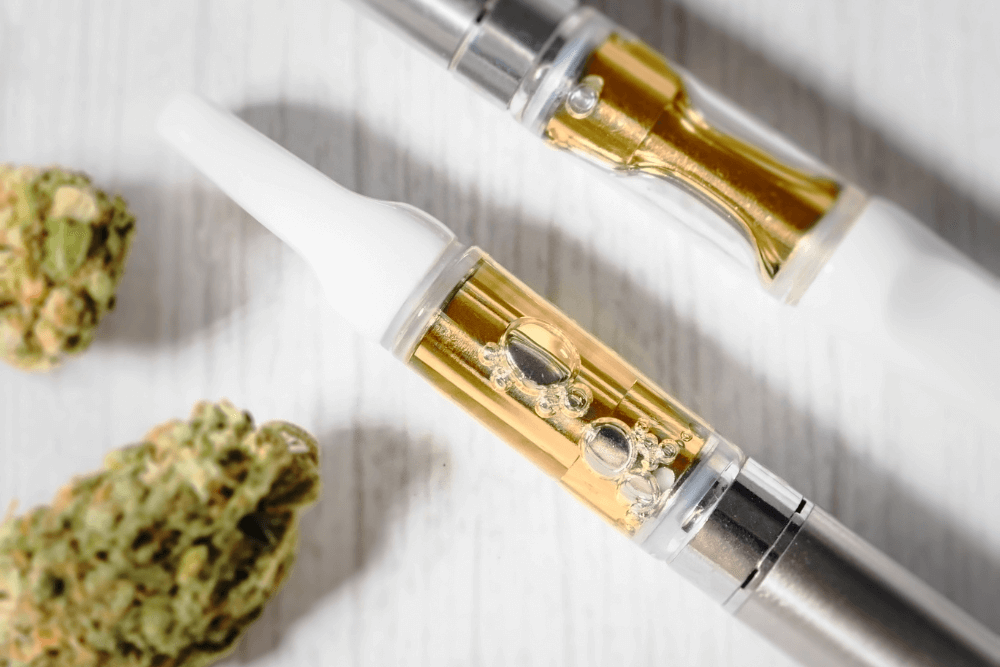
In 2021, massive China-based e-cigarette manufacturer Shenzhen Smoore Technology Limited (the parent company of CCELL) initiated a proceeding before the US International Trade Commission (ITC) in which it alleged that Advanced Vapor Devices (AVD) and 37 other vape hardware companies infringed upon its patents.
After roughly a year and a half of legal proceedings, the ITC ruled that the vape hardware companies did not infringe on CCELL’s intellectual property related to ceramic core vape cartridges. This was a victory for not only the US cannabis vaping sector but the cannabis industry as a whole.
From our perspective, CCELL’s litigation appeared as an attempt to drain competitors’ resources and eliminate competition. By refusing to stand aside, we were ultimately vindicated by the ITC’s ruling.
The Implications of CCELL’s ITC Proceeding
CCELL alleged that AVD and the other respondents had infringed upon three of its patents. However, the ITC ultimately ruled that one of CCELL’s patents was improperly obtained and the respondents’ products did not infringe on the other two patents. The ITC also determined that CCELL failed to establish a “domestic industry,” which is required for ITC claims since such proceedings are designed to protect US interest in fair trade.
The more worrisome part is that, had CCELL been successful in proving its allegations, the ITC would have barred the importation of the infringing products, resulting in CCELL gaining a stranglehold on ceramic core vaporization technology. This would have had a far-reaching impact on the broader vape industry. By eliminating the competition, CCELL would have placed itself in a position to control the market, pricing, and timing of new product releases. Inevitably, customers would have faced the prospect of higher prices and slower innovation cycles—both natural results of decreased competition.
We firmly believe consumers deserve the innovation, variety, quality, and fair pricing that competition brings. In our view, the industry is large enough to handle fair competition. Commercial success should come as a result of offering better products, service, and prices—not from using litigious tactics to drain competitors’ resources.
How the Vape Industry Fought Back
Our response to the lawsuit involved deep intellectual property (IP) research and engaging the right advisors, without whom we could not have succeeded while shouldering the burden of the litigation. During the litigation, we continued to capture further market share, gain clients and support our current clients by doubling down on our strategy of creating high-quality products and delivering exceptional customer service.
Operating from a cannabis-centric perspective that does not appreciate a bully in the industry, we put together a joint defense group, including The Blinc Group and Greentank, among others. After all, we are competitors—not enemies.
Together, we’re able to cooperate on policy reform, laws and lobbying that benefit the entire industry and prevent monopolies. All while maintaining healthy competition that promotes innovation. When push came to shove, the vape industry proved that cannabis companies could successfully work together in the industry’s best interest.
A Catalyst to Focus on IP Now
The ITC case should be a wake-up call to cannabis companies to focus on developing and protecting their own intellectual property. Developing and owning IP grants companies a competitive advantage in the marketplace that protects their novel inventions.
Companies outside of cannabis certainly understand this. Merely securing a cannabis-related patent does not violate any federal laws. Companies in other industries (pharma, agriculture, CPG, etc.) can and already have started to gain a toehold in cannabis through their IP.
If anything, the ITC case is a preview of things to come. If cannabis companies don’t get ahead of the curve, they may find themselves as the targets of successful infringement proceedings. Worse, this could result in them being unable to bring certain products to market.
Some of these cases will be valid—companies deserve to reap the rewards of real innovation arising from investments in R&D. Some will be trolling. Yet others will be similar to our situation, where a well-capitalized company uses its resources to put competitors through the wringer.
To be clear, earning and enforcing patents is, for the most part, good practice. Patents incentivize innovation and stimulate healthy competition by rewarding parties who create novel inventions. Those patents encourage competitors to come up with their own innovations. If a technology is unavailable because it’s patented, competitors are forced to invest more in their own R&D to create their own innovations. This becomes a flywheel as all companies try to out-innovate each other, ultimately benefiting consumers. But it is critical to not abuse the process and not allow others to do so either. Healthy competition promotes true innovation. And that benefits all of us.
IP will be a key factor in shaping the industry’s future. Despite the multitude of present-day challenges our industry faces, it is crucial for companies to prioritize investment in IP if they are aiming for longevity. Many companies look at the costs associated with IP as an operating expense, while it would more appropriately be viewed as an investment. You must devote the resources now to have differentiated, innovative and proprietary products in the future.
Member Blog: Understanding Alfalfa Mosaic Virus – The Four Key Aspects of its Symptoms, Effects, and Transmission Strategies

As a cannabis cultivator, staying vigilant about the health of your crops is paramount. Among the array of plant viruses that can impact your harvest, the Alfalfa Mosaic Virus (AMV) stands out as a considerable threat. This formidable plant virus primarily affects leguminous crops, but it doesn’t spare cannabis. Part of the Alfamovirus genus in the Bromoviridae family, AMV can inflict serious economic losses in agricultural settings.
Four Key AMV Symptoms
Recognizing AMV in your cannabis cultivation starts with understanding the symptoms. Here are the four major signs you should be on the lookout for:
- Mosaic Patterns: Watch out for irregular light and dark green areas on the leaves. This mottling gives the foliage a unique marbled appearance, indicating a potential AMV infection.
- Leaf Yellowing: One of the classic signs of plant stress, leaf yellowing, can signal an AMV infection in your cannabis plants. This can range from mild to severe and may occur independently or alongside mosaic patterns.
- Stunted Growth: Is your cannabis crop not reaching its usual height? This could be due to AMV infection, as it often stunts plant growth.
- Leaf Distortion: AMV may also cause cannabis leaves to become twisted, curled, or deformed, disrupting their photosynthetic abilities.
The severity of these symptoms can vary depending on the plant’s developmental stage and the specific environmental conditions. For professional guidance, contact us at (530) 220-8754.
Four Critical AMV Effects
AMV can significantly impact your cannabis cultivation efficiency and yield. The primary effects of an AMV infection include:
- Reduced Yield: AMV interferes with normal cannabis growth, often leading to a reduction in productivity and a lower overall yield.
- Decreased Crop Quality: Visible symptoms like mosaic patterns and leaf yellowing can impact the visual appeal of your cannabis crops, potentially affecting their market value.
- Impaired Photosynthesis: The virus-induced symptoms can disrupt chlorophyll function, causing a decline in the photosynthetic capacity and overall weakened growth.
- Weakened Plant Health: AMV can compromise the immune response and physiological functions of your cannabis plants, making them more susceptible to secondary infections.
Four Modes of AMV Transmission
Controlling AMV in your cannabis crops involves understanding how the virus spreads:
- Non-Persistent Aphid Transmission: In this type of transmission, aphids act as carriers of the virus without being affected or changed by it. The virus attaches to the mouthparts (stylets) of the aphid and is transferred to the next plant when the aphid feeds. The key aspect of non-persistent transmission is its speed; the virus can be transmitted quickly, usually within minutes to a few hours of the aphid feeding on an infected plant. This type of transmission does not require the virus to enter or multiply within the body of the aphid.
- Persistent Aphid Transmission: This type of transmission involves a longer-term relationship between the virus and the aphid. The aphid ingests the virus, which then enters the insect’s body and may even multiply within it. The virus remains within the aphid for extended periods, sometimes for the lifespan of the aphid. The virus is then passed to healthy plants when the infected aphid feeds on them. The transmission process in this case is slower than in non-persistent transmission, often taking hours to days before the virus can be passed on to a new host plant.
- Mechanical Transmission: This refers to the physical transfer of the virus from an infected plant to a healthy one, often through human activities. It can occur when farming tools or machinery contaminated with the virus are used across multiple plants, leading to the spread of AMV.
- Infected Plant Material: This involves the transmission of the virus via seeds, cuttings, or other parts of the plant that are already infected with AMV. Such materials can carry the viral particles, thus spreading the virus to new plants.
In conclusion, understanding the Alfalfa Mosaic Virus (AMV) is crucial for cannabis cultivators. Recognizing the symptoms, understanding its effects, and knowing its modes of transmission are the first steps to protecting your crops and ensuring a healthy yield. Regular testing, early detection, and proper disease management practices can help you mitigate the impact of AMV in your cannabis cultivation.
Please, ensure you are taking all necessary steps to keep your cultivation safe, as well as our community. Plant pathogens are an enemy we all face, and we all must take responsibility for preventing and educating one another. That’s why we’ve developed a downloadable poster for you to keep your cultivation crew informed about top-tier Biosecurity Measures for Plant Pathogen spread prevention.
Let’s continue to grow safe and healthy cannabis!
Member Blog: The Drawbacks of Doing Your Own Payroll

The cannabis industry is unique in that there are many issues to consider when it comes to payroll. Doing payroll in-house can prove to be a complex endeavor and can have many drawbacks along the way. For instance, it can be difficult to keep up with ever-changing laws and regulations relating to payroll taxes, safety net contributions, and labor law compliance. Additionally, in-house payroll requires comprehensive knowledge to compute withholdings and deductions from employee wages, which can prove to be challenging.
Using a third-party payroll provider can help to improve accuracy and ease the burden of managing employee payroll. Third-party payroll providers can handle all the complexities involved in payroll, such as withholdings, benefit deductions, and payroll tax filings, freeing up valuable time and resources. Furthermore, a third-party payroll provider will be securely monitoring and tracking payroll changes, ensuring compliance with the latest payroll regulations.
In general, doing payroll in-house can be a complex endeavor that requires specialized knowledge and can be a resource-consuming task, but in a heavily regulated industry like cannabis this is especially true. For these reasons, cannabis businesses who switch to a third-party payroll provider often find the benefits far outweigh any obstacles.
Business owners have their minds set on ensuring the growth and stability of their businesses, figuring out modes to cut down costs along the line. Particularly, budding businesses in a bid to satisfy this widespread phenomenon, decide on DIY payroll – choosing to oversee the bookkeeping and accounting arm of their businesses. The common misconception is that payroll outsourcing options constitute a financial burden, contrariwise, the costs incurred from consistent errors (as is always the case) sum up to impact much more extensive financial repercussions on the company.
It is noteworthy that the convincing nature of DIY payroll also bears characteristic flaws which could pose serious threats to your business enterprise. Details on the drawbacks of doing your payroll are highlighted in this article.
Extreme Dependency
Seeing that you and/or another member of your workforce is solely charged with the responsibility in addition to other work-related assignments, chances are that your company finances will take a nosedive if you or the designated other is unavailable for any reason. This isn’t the same if you outsource, as payroll software and service providers are unfazed by such challenges.
Reduced Productivity
Settling financial statements and record keeping are time-consuming processes. Therefore, taking this up yourself would suggest that precious time and labor that could be spent on other vital aspects of the business will be diverted, influencing the work rate and eventual results.
In addition, payroll requires rapt attention to detail, precision, and patience. There is increased stress and the resultant frustration that could result could negatively impact productivity.
Heightened Susceptibility to Errors
Payroll is a complex system of procedures, requiring well-trained and skillful personnel. Experienced service providers are prone to errors and sometimes make mistakes, the chances, therefore, are that if you handle it yourself, you will make grave errors.
Inaccurate bookkeeping can lead to miscalculation of profit. Unpaid invoices would remain unnoticed, and the establishment suffers losses.
-
Missing Important Deadlines
The workload makes missing deadlines a high possibility. Poor handling of documents and vital information can result in missing payment dates, ignoring tax information and forgetting payment bonuses and overtime, to mention a few. This could result in noncompliance with government rules and your business might spend a large chunk satisfying fees and fines.
With inaccurate bookkeeping, there is no adequate knowledge of cash inflow and outflow. This common DIY payroll challenge could lead to payroll issues in the long run and set your business up for a downturn.
Apprehension by Regulatory Agencies
With DIY payroll, you may have inaccurate books, payment issues, consistent complaints, and noncompliance with state and federal laws. This would ignite the swift actions of government agencies like the Internal Revenue Service (IRS) and your business may suffer grave repercussions.
Indeed, the complications accompanying DIY payroll may outweigh the advantages proposed, hence the need to consider helpful payroll services to ease the burden and help your business focus.
Having an effective payroll system is crucial for Human Capital Management, an important ingredient for business growth and advancement.

















 Strain
Strain




















